- Teach Early Years
- Teach Primary
- Teach Secondary
- Technology & Innovation
- Advertise With Us
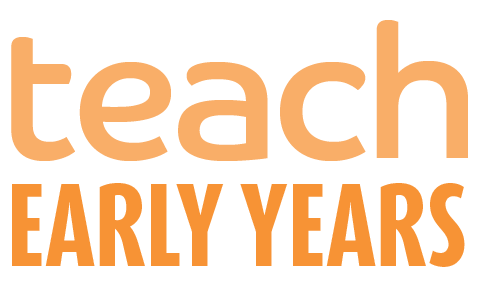
- Free Reports
- Have You Seen
- Learning & Development
- A Unique Child
- Enabling Environments
- Positive Relationships
- Nursery Management
Home > Learning & Development
Learning and Development

Maths problem-solving – Activities for Early Years settings
- Written By: Judith Dancer
- Subject: Maths
Share this:
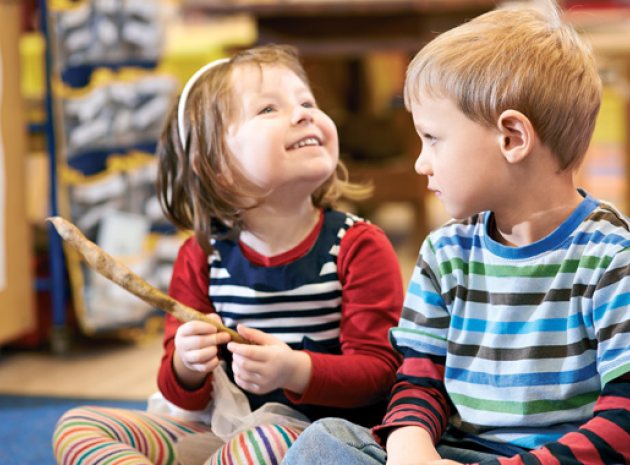
Critical thinking doesn’t have to be a daunting prospect. There are simple, effective and exciting ways to encourage children’s maths problem-solving skills, says Judith Dancer…
Maths is a subject many adults lack confidence in. Having struggled with it at school they often avoid it, wherever possible, when grown up.
But if maths seems scary for some people, then maths problem-solving can cause even more anxiety. There is no ‘safety net’ of knowing the ‘correct answer’ beforehand. This is because maths problem-solving lends itself to investigation and exploration with lots of possible tangents.
Understandably this is often the area of maths where many practitioners feel least confident. However, young children, who are not restrained by right answers, feel the most enthused and animated.
The non-statutory Development Matters Guidance , as part of ‘creating and thinking critically’ in the Characteristics of Effective Learning, identifies that practitioners need to observe how a child is learning, noting how a child is:
- thinking of ideas;
- finding ways to solve problems;
- finding new ways to do things;
- making links and noticing patterns in their experience;
- making predictions;
- testing their ideas;
- developing ideas of grouping, sequences, cause and effect;
- planning, making decisions about how to approach a task, solve a problem and reach a goal;
- checking how well their activities are going;
- changing strategy as needed;
- reviewing how well the approach worked.
All of these elements are, at one time or another, part of the problem-identifying and solving process – although not at the same time and in the same problem.
Role of the adult
Maths problem-solving for young children involves them understanding and using two kinds of maths:
- Maths knowledge – learning and applying an aspect of maths such as counting, calculating or measuring.
- Maths thinking skills – reasoning, predicting, talking the problem through, making connections, generalising, identifying patterns and finding solutions.
The best maths problems for children are the ones that they identify themselves. They will be enthused, fascinated and more engaged in these ‘real’, meaningful problems.
Children need opportunities to problem-solve together. As they play, they will often find their own mathematical problems.
One of the key roles of practitioners is to provide time, space and support for children. We need to develop situations and provide opportunities in which children can refine their maths problem-solving skills and apply their mathematical knowledge.
Supporting maths problem-solving
You can effectively support children’s developing maths problem-solving strategies through:
- Modelling maths talk and discussion – language is part of maths learning because talking problems through is vital. Children need to hear specific mathematical vocabulary in context. You can promote discussion through the use of comments, enabling statements and open-ended questions.
- Providing hands-on maths problem-solving activities across all areas of the setting. Children learn maths through all their experiences and need frequent opportunities to take part in creative and engaging experiences. Maths doesn’t just happen in the maths learning zone!
- Identifying potential maths learning indoors and outdoors. Provide rich and diverse open-ended resources that children can use in a number of different ways to support their own learning. It is important to include natural and everyday objects and items that have captured children’s imaginations, including popular culture.
Maths problem-solving possibilities
Spell it out.
This experience gives children lots of opportunities to explore calculating, mark making, categorising and decisions about how to approach a task.
What you need to provide:
- Assorted containers filled with natural materials. This includes leaves, pebbles, gravel, conkers, twigs, shells, fir cones, mud and sand. Include some ‘treasure’ – sequins, gold nuggets, jewels and glitter.
- Bottles and jugs of water, large mixing bowls, cups, a ‘cauldron’, small bottles, spoons and ladles.
- Cloaks and wizard hats.
- Laminated ‘spells’ – e.g. “To make a disappearing spell, mix 2 smooth pebbles, 2 gold nuggets, 4 fir cones, a pinch of sparkle dust, 3 cups of water”.
- Writing frameworks for children’s own spell recipes and a shiny ‘Spell Book’ to stick these in.
- Temporary mark-making opportunities such as chalk on slate.
The important thing with open-ended maths problem-solving experiences like this is to observe, wait and listen. Then, if appropriate, join in as a co-player with children, following their play themes.
So if children are mixing potions, note how children sort or categorise the objects. What strategies do they use to solve problems? What happens if they want eight pebbles and they run out? Observe what they do next.
When supporting children’s maths problem-solving, you need to develop a wide range of strategies and ‘dip into’ these appropriately. Rather than asking questions, it is often more effective to make comments about what you can see. For example, say, “Wow, it looks as though there is too much potion for that bottle”.
Acting as a co-player offers lots of opportunities to model mathematical behaviours. This might include reading recipes for potions and spells out loud, focusing on the numbers – one feather, three shells…
Going, going, gone
We all know that children will engage more fully when involved in experiences that fascinate them. If a particular group has a real passion for cars and trucks , consider introducing maths problem-solving opportunities that extend this interest.
This activity offers opportunities for classifying, sorting, counting, adding and subtracting, among many other things.
- Some unfamiliar trucks and cars and some old favourites. Ensure these include metal, plastic and wooden vehicles that can be sorted in different ways.
- Masking tape and scissors.
- Sticky labels and markers.
Mark out some parking lots on a smooth floor, or huge piece of paper using masking tape. Lining paper is great for this. Line the vehicles up around the edge of the floor area.
Encourage one child to select two vehicles that have something the same about them. Ask the child, “What is the same about them?”.
When the children have agreed on what is the same – e.g. size, materials, colour, lorries or racing cars – the child selects a ‘parking lot’ to put the vehicles in. So this first parking lot could be for ‘red vehicles’.
Another child chooses two more vehicles that have something the same. Do they belong in the same ‘parking lot’, or a different parking lot? E.g. these vehicles could both be racing cars.
What happens when a specific vehicle could belong in both lots? E.g. it could belong in the set of red vehicles and also belongs in the set of racing cars.
Support the children as they discuss the vehicle. Make new ‘parking lots’ with masking tape and create labels for the groups, if you choose.
Observe children’s strategies
It’s really important to observe the strategies the children use. Where appropriate, ask the children to explain what they are doing and why.
If necessary, introduce and model the use of the vocabulary ‘the same as’ and ‘different from’. Follow children’s discussions and interests. If they start talking about registration plates, consider making car number plates for all the wheeled toys outdoors.
Do the children know the format of registration plates? Can you take photos of cars you can see in the local environment?
Camping out
Constructing camps and dens outdoors is a good way to give children the opportunity to be involved in lots of maths problem-solving experiences and construction skills learning. This experience offers opportunities for using the language of position, shape and space, and finding solutions to practical problems.
- Materials to construct a tent or den such as sheets, curtains, poles, clips and string.
- Rucksacks, water bottles, compasses and maps.
- Oven shelf and bricks to build a campfire or barbecue.
- Buckets and bowls and water for washing up.
Encourage the children to explore the resources and decide which materials they need to build the camp. Suggest they source extra resources as they are needed.
Talk with the children about the best place to make a den or erect a tent and barbecue. During the discussion, model the use of positional words and phrases.
Follow children’s play themes. This could include going on a scavenger hunt collecting stones, twigs and leaves and going back to the campsite to sort them out.
Encourage children to try different solutions to the practical problems they identify. Use a running commentary on what is happening without providing the solution to the problem.
Look for opportunities to develop children’s mathematical reasoning skills by making comments such as, “I wonder why Rafit chose that box to go on the top of his den.”
If the children are familiar with traditional tales, you could extend this activity by laying a crumb trail round the outdoor area for children to follow. Make sure that there is something exciting at the end of the trail. It could be a large dinosaur sitting in a puddle, or a bear in a ‘cave’.
Children rarely have opportunities to investigate objects that are really heavy. Sometimes they have two objects and are asked the question, “Which one is heavy?” when both objects are actually light.
This experience gives children the chance to explore really heavy things and measures (weight). They also need to cooperate and find new ways to do things.
- A ‘building site’ in the outdoor area. Include hard hats, builders’ buckets, small buckets, shovels, spades, water, sand, pebbles, gravel, guttering, building blocks, huge cardboard boxes and fabric (this could be on a tarpaulin).
- Some distance away, builders’ buckets filled with damp sand and large gravel.
- Bucket balances and bathroom scales.
With an open-ended activity such as this, it is even more important to observe, wait and listen as the children explore the building site and the buckets full of sand and gravel.
Listen to the discussions the children have about moving the sand and the gravel to the building site. What language do they use?
Note the strategies they use when they can’t lift the large buckets. Who empties some of the sand into smaller buckets? Who works together collaboratively to move the full bucket? Does anyone introduce another strategy, for example, finding a wheelbarrow or pull-along truck?
Where and when appropriate, join in the children’s play as a co-player. You could act in role as a customer or new builder. Ask, “How can I get all this sand into my car?”. “How much sand and gravel do we need to make the cement for the foundations?”.
Extend children’s learning by modelling the language of weight:
- heavy/heavier than/heaviest
- light/lighter than/lightest
- about the same weight as/as heavy as
- balance/weigh
Judith Dancer is an author, consultant and trainer specialising in communication and language and mathematics. She is co-author, with Carole Skinner, of Foundations of Mathematics – An active approach to number, shape and measures in the Early Years .
You may also be interested in...
- Great ways to support communication, language and literacy
- How to provide outstanding learning in the outdoors
- Award winners announced
Subscribe to Our Newsletter
I agree to the Terms & Conditions and Privacy & Cookies Policy.
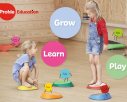
Enhance your children’s learning environment with unique products from Profile Education

“Colourful, engaging, multisensory learning”: Rocket Phonics First Steps for ages 3–4

Transform your setting with 123v’s innovative shelter solutions

A shared vision for early years – reflecting on practice at the hey! conference
View all Top Products
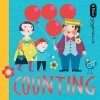
Pants, Vest, Getting Dressed
Recommended for you....
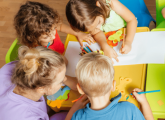
Early years educator level 3 – Is this qualification fit for purpose?
Editors picks

Getting messy with the EYFS
Rhythm games – Encouraging literacy through music
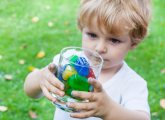
Waterway fun and play

Ten of our favourite early years problem-solving activities
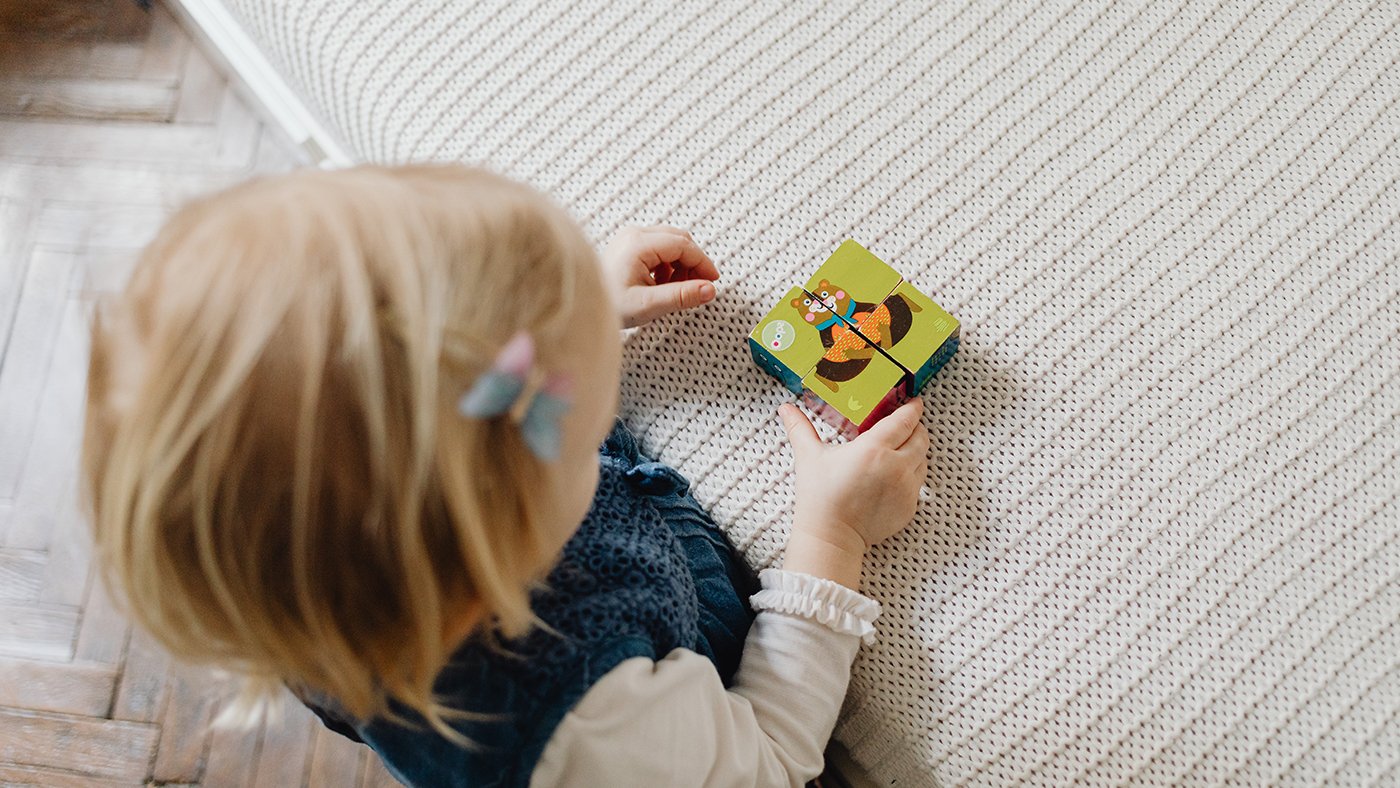
A lot of the time when we hear the term ‘problem-solving’, our brain jumps back to the tricky maths teasers from our school days, and we immediately recoil a little. However, problem-solving is much more than number conundrums.
Problem-solving is a key part of early years development and can support learning across many of the My First Five Years streams. The skill of problem-solving starts developing very early in a child's life and stems from the knowledge of the world that they are constantly building.[1]. For instance, your baby may cry when hungry as they know that crying gets the attention of an adult who can feed them.
Problem-solving is a part of everyday life for children, from being a baby through to their future adulthood. When children learn how to solve problems, it can support them in building resilience, self-confidence and self-esteem. Taking part in problem-solving activities with others can also help children develop social skills, communication and relationships.[2]
Psychologist Jean Piaget’s theory of cognitive development also focuses on the importance of problem-solving for early childhood development. In each developmental stage of his theory, the psychologist emphasised the importance of play-based learning for young children when it comes to problem-solving, and in turn building skills across the spectrum.[3]

Supporting problem-solving
When thinking about problem-solving activities for your child, it can be difficult to know where to begin.
To keep children engaged, enabling them to take the lead and follow their interests, is key. Play-based, hands-on learning makes acquiring new skills more interesting and memorable for young children.[4]
Many activities can support children when developing their problem-solving abilities – the possibilities are wide open. When considering which problem-solving activities are the most effective, it is also important to consider how they can be adapted to multiple interests, abilities and how accessible they are when it comes to using resources and materials.
To help you out, here are ten of My First Five Years’ favourite problem-solving activities that you can try with your child.
1) Den-building
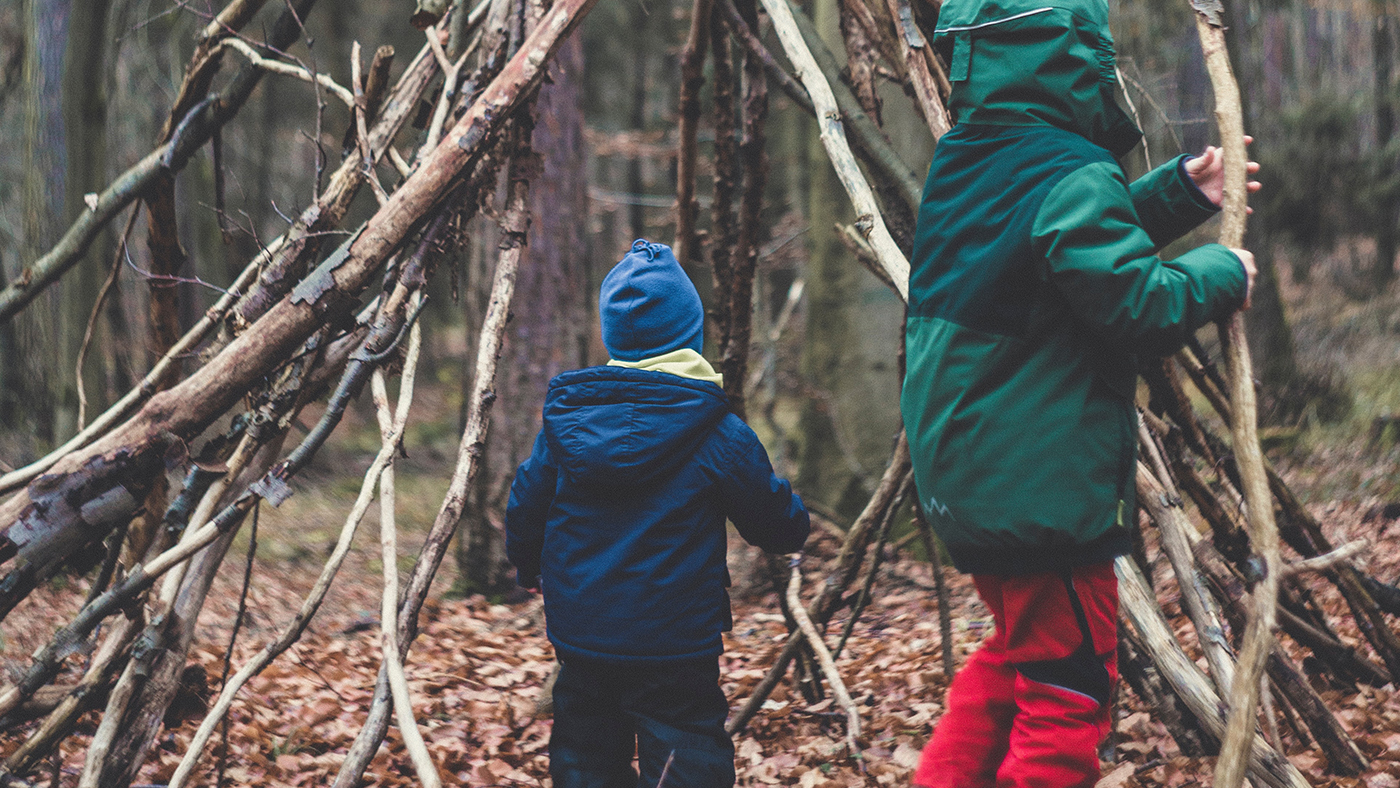
Den-building is brilliant for problem-solving as it requires creative and critical-thinking, foresight, and planning. It is also a wonderful way to promote sustained shared thinking with your child. Sustained shared thinking is a way of working together that encourages individuals to evaluate the problem that they are working on and is focused on collaboration, using experiences and prior knowledge.[5]
When building a den with your child, encourage your child to take the lead. You could provide materials such as boxes and blankets, or you could even ask your child to decide what materials you need before starting, encouraging them to plan out their work. Den-building can also be done both indoors and outdoors and with children from a young age. You may find that people have already started creating these in your local woodland that you can add to, adapt, or just enjoy!
2) Cooking and baking
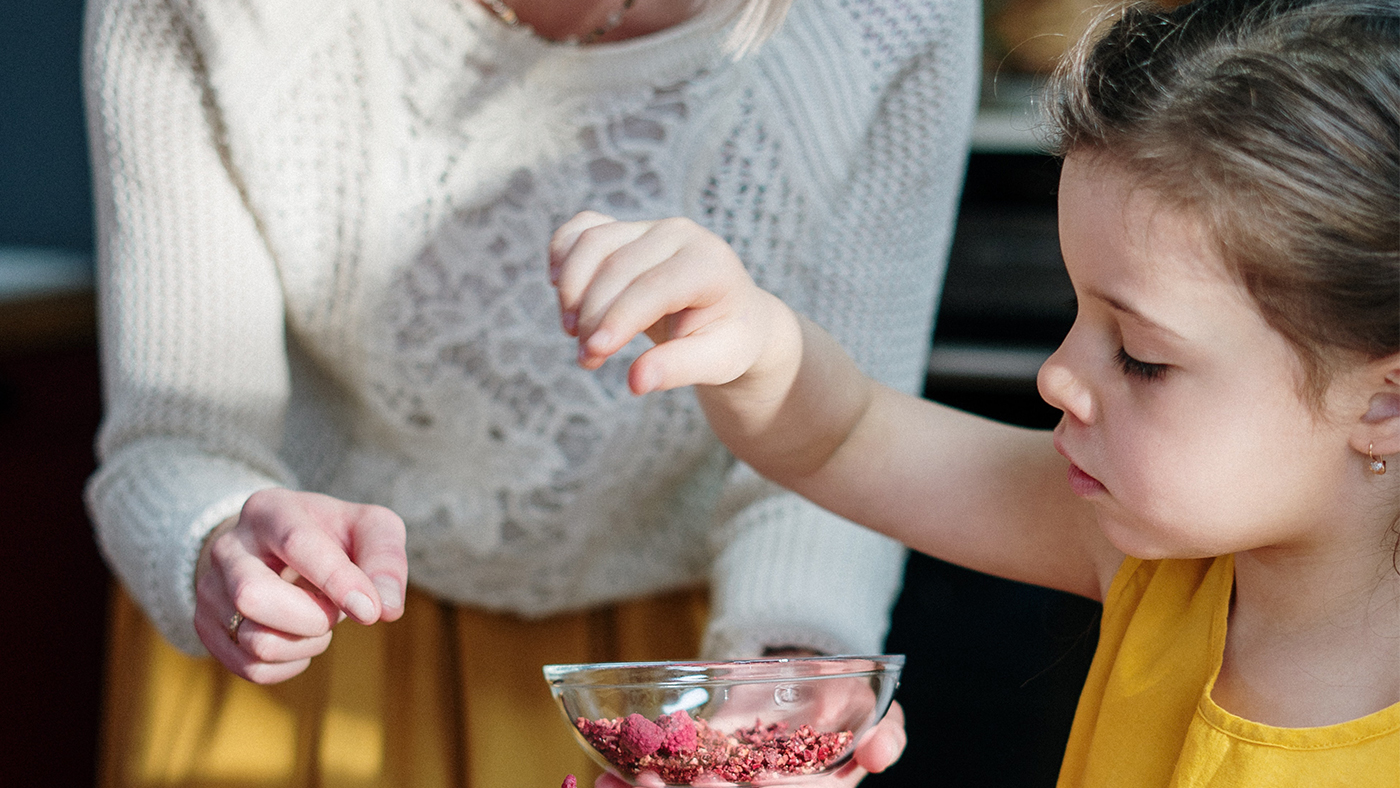
Cooking and baking are not only fun activities, but they also focus on mathematical problem-solving. To bring problem-solving into a cooking and baking activity, you can ask your child to count out simple measurements, for instance, cups of flour or sugar. Activities like cooking or baking are great for children to be able to take ownership of what is happening; encourage them to choose what you will make and allow them to do all the elements themselves.
What’s great about cooking is it really doesn't matter how it turns out! Problems can arise often in cooking or baking, for example, the mixture may turn out too dry, you may be an ingredient short, or your cakes might not rise how you expected them to. If this is the case, talk to your child about what might have gone wrong and how you can rectify it next time! Then when they come to do it again, they can use their prior knowledge to help them.
3) Playing with patterns
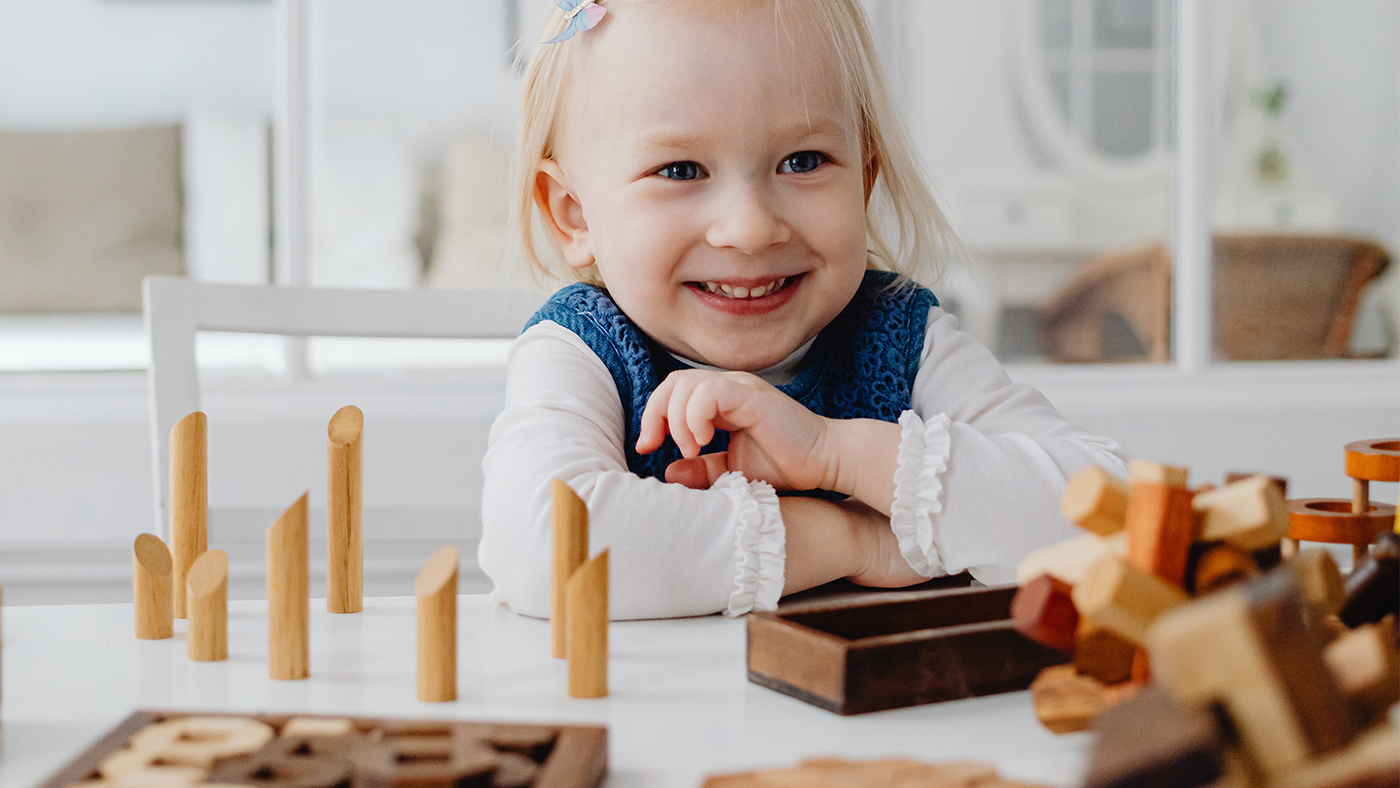
Patterns are a great activity for mathematical problem-solving. You can create patterns of any objects that you can find! For example, with pieces of fruit, pebbles from the garden, building blocks or even snacks! You could encourage your child to continue patterns, fill in the missing pieces or even create their own for you to solve problems with as they grow more confident.
4) Sorting and categorising
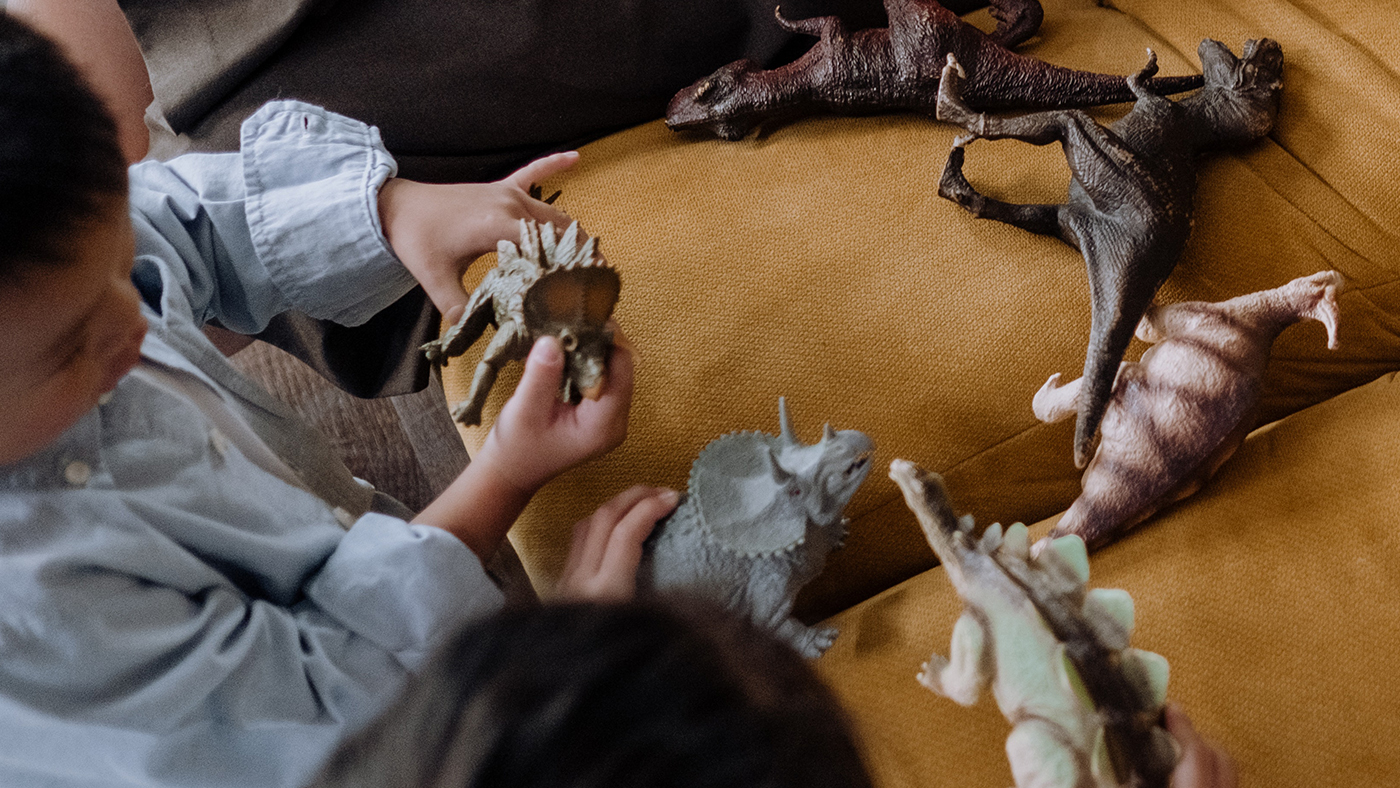
Sorting and categorising objects is an activity that supports children in mathematical problem - solving and can be easily adapted to individual children’s abilities . You could encourage your child to sort by shape, size, colour, or better yet , their interests . For example, if they are a dinosaur enthusiast, they could classify them by wh ich is their favourite or least favourite , or order them by the size of their feet. They may even find enjoyment in helping you with daily sorting such as recycling or washing!
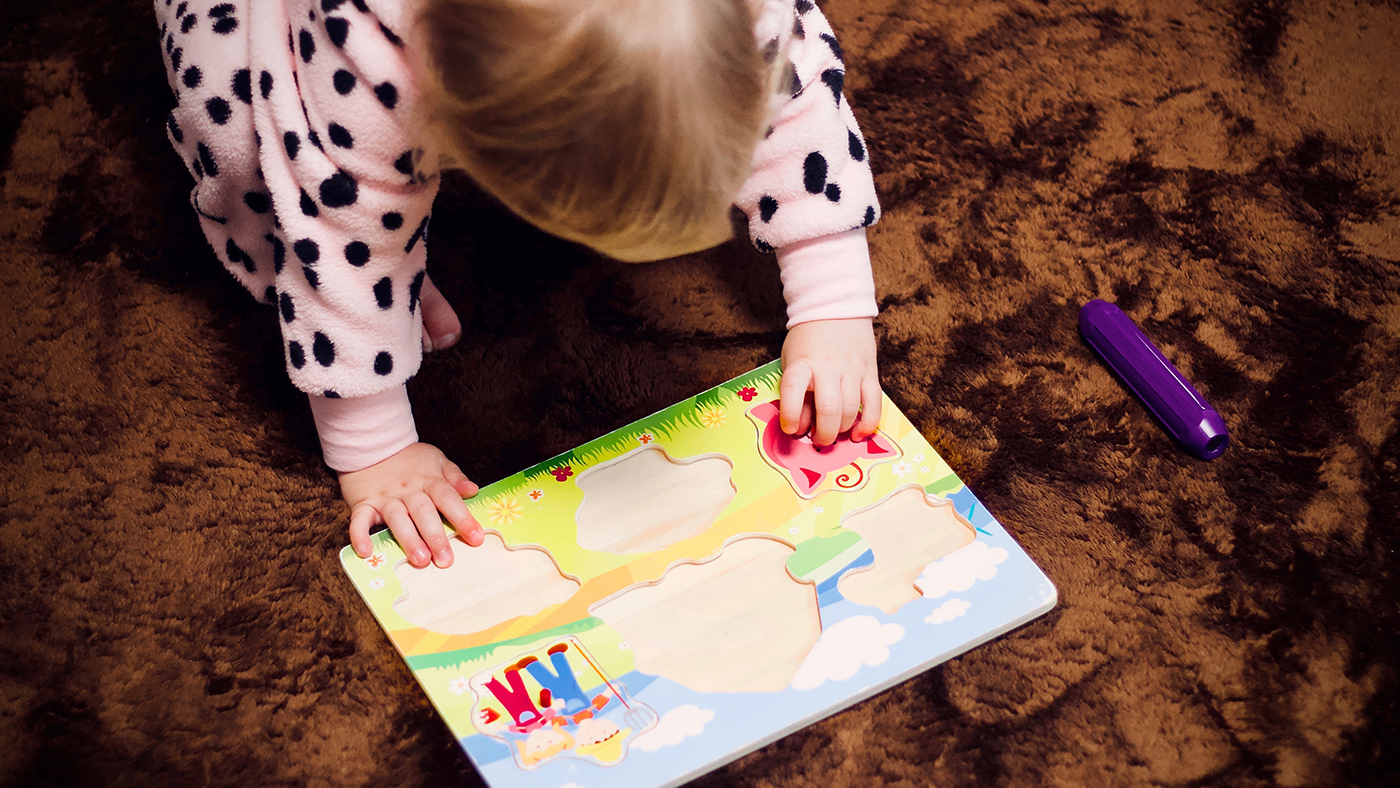
Puzzles are a fun resource that can be used with children from a very young age. There are a wide variety of puzzles for children to access , such as chunky wooden puzzles or traditional shape sorters. When playing with puzzles, children will have to use their prior knowledge and experience of shape, space and measure whil e also experimenting with different angles and placements. They will use trial and error to find the best way to complete the puzzle and then will use this knowledge in future attempts.
6) Ice rescue
As well as being a great problem-solving activity, ice rescue enables children to explore seasonal changes, temperatures and develop their fine and gross motor skills using tools. To play ice rescue, freeze toys inside ice overnight. This could be in cake moulds or small bowls. Use toys that will motivate your child, for instance, their favourite small figurines.
Once frozen, place your blocks of ice in a big bowl or tray, and encourage your child to think about how they can get the items out. You could provide tools, or even get your child to find tools themselves.
7) Obstacle courses

Obstacle courses are versatile and can be made with a wide variety of resources. When setting up an obstacle course for your child, try to include sections where your child will have to stop and think about how they will have to adapt their body to move through it , for example, something that they must climb over or under, or a section where they have to move differently. You could even include them in trying to create the obstacle course and allow them to make it the most challenging they can.
8) Filling, emptying and investigation
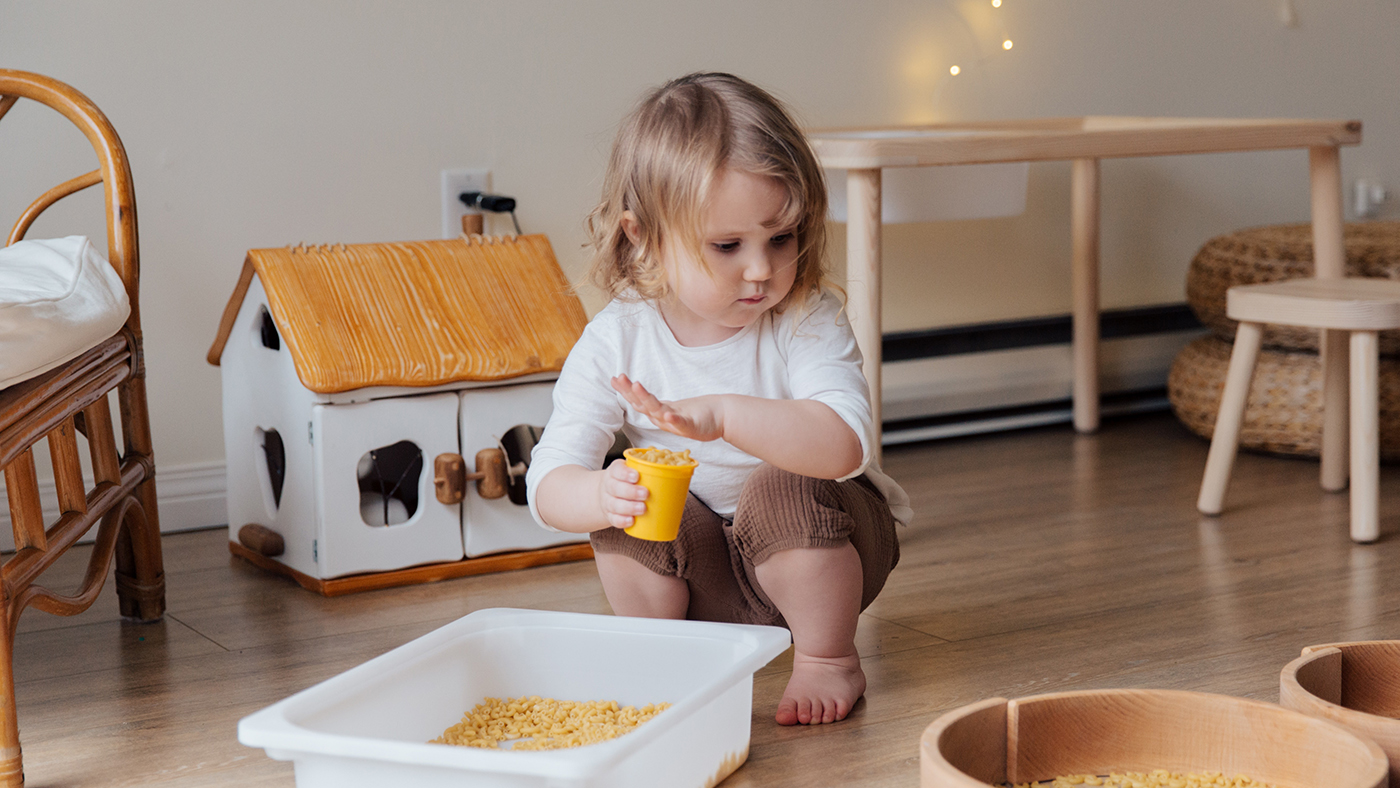
Many children enjoy filling and emptying during play. Investigating this way helps children to get a sense of size, capacity and explore predicting and estimation. For instance, if your child likes playing with sand, you could ask them to guess how many scoops they will need to fill a container, or if they like water play you could challenge them to find a way to move the water between two containers as quickly as possible , or from one tray to another.
9) Story problems
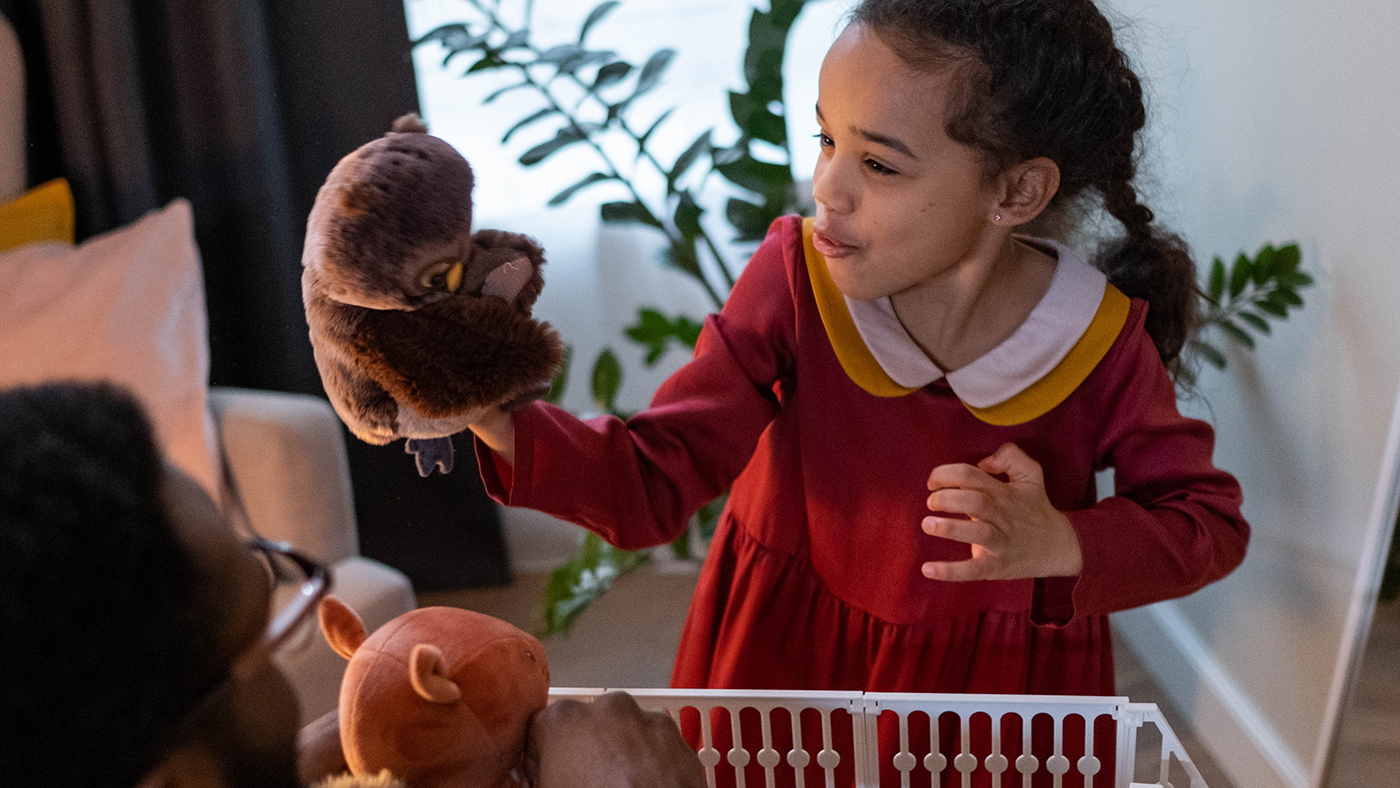
Stories are an effective way of introducing problem-solving and they can be a highly engaging way to promote creative and critical-thinking. You could use familiar or traditional stories to help scaffold play opportunities for your child. For example, you could try building a house for the three little pigs that cannot be knocked over. You could test out different methods using materials that you can find around your home.
If you are feeling creative, you could also make up a little story using your child’s favourite toys. An example of this could be figuring out how to share food between their favourite teddies during a picnic and making sure that everyone gets enough.
10) Playing with loose parts or open-ended resources
Natural materials such as leaves, conkers, sticks, acorns, and pinecones are all brilliant open-ended play opportunities (if supervised). You can also use household objects like bottle caps, curtain rings, tubes, tins, boxes, buttons etcetera in this sort of play. All it requires is a tray of different objects that you've collected and time to explore them. Your child will have to think creatively about how to utilise the objects and in doing so will be challenging their cognitive capacity by problem-solving to achieve the desired outcomes.
References
[1] Rachel Keen. (2011). The Development of Problem Solving in Young Children: A Critical Cognitive Skill. Available: https://www.annualreviews.org/doi/full/10.1146/annurev.psych.031809.130730#_i22 .
[2] Sheila Ebbutt. (2009). EYFS best practice - All about ... problem-solving . Available: https://www.nurseryworld.co.uk/features/article/eyfs-best-practice-all-about-problem-solving .
[3] Piaget, J. (1983). Piaget's Theory. In P. Mussen (ed). Handbook of Child Psychology. 4th edition. Vol. 1. New York: Wiley.
[4] Unicef. (2018). Learning Through Play. Available: https://www.unicef.org/sites/default/files/2018-12/UNICEF-Lego-Foundation-Learning-through-Play.pd .
[5] Kathy Sylva, Edward Melhuish, Pam Sammons, Iram Siraj-Blatchford and Brenda Taggar. (2004). The Effective Provision of Pre-School Education (EPPE) Project: Findings from Pre-school to end of Key Stage1. Available: https://dera.ioe.ac.uk/8543/7/SSU-SF-2004-01.pdf .
T&C's | Privacy Policy | Cookies
© Copyright 2023 - My First Five Years Ltd.

10 fun maths activities for the EYFS
With Famly since
In a rush? Here's a quick breakdown:
- Maths is one of the important developmental areas for the Early Years. But, for many of us, it's harder, or not our favourite.
- But, with these creative maths activities, the children will learn to love numbers, counting and other maths skills.
- Plus, they develop other skills too, like fine motor skills.
Maths in the Early Years is a crucial stepping stone for children to develop, which is why it’s so important that the little ones can explore and experience it in an enjoyable way. We’ve carefully chosen some fun activities and games to promote early maths learning of numbers through play.
Want to see how it’s done? Click here to watch the video of our five favourite activities ⏯
Early Years activities to develop math skills

1. Combine maths skills with fine-motor skills.
Number Hunt in Jelly by Hazeldene Family Centre
This fun maths activity:
First, spread out some plastic numbers in jelly layers. When it’s all set, give out some tongs to children and show them how to pick up the numbers from the wiggly substance ( and practice their fine motor skills along the way! ). This sensory play is a great way of sneaking in number recognition into some sensory play.
What you need:
- Plastic Numbers

2. How do you make maths activities fun? Add Lego!
DIY Lego Pattern Cards by A Crafty Living
This fun maths game:
Lego. Useful in so many different ways , including making mathematics exciting. Prepare some cards with colourful blocks on them and let children discover colour patterns and reproduce them with LEGO bricks. Consider leaving the colouring part to your little learners so they can form their own patterns and include some EAD in the mix too. It's a win-win!
- Paper Cards
- Coloured Pencils
- LEGO Blocks

3. Challenge the children's maths skills to solve a missing number mystery
Missing Number Math Activity by Planning Playtime
This Early Years maths game:
Write number sequences on craft sticks and remember to leave some blanks in between. Next, you write the missing numbers on some clothes pins and give them out to the players. Now the children use their fine-motor skills and clip the pins on sticks and complete the sequence. The best thing about this fun and inexpensive maths game is that you only create the props once and they’re ready to be used as many times as you like.
- Craft Sticks (colour or plain)
- Clothes Pins

4. A simple game of swat the number.
Smack the Number Counting Game by Fun Learning for Kids
Prepare some sticky notes with various numbers and place them in front of the children armed with fly swatters. Roll the dice to get your target number. The goal of this simple yet fun game is for the little ones to identify the number on the dice and match it with the ones written on sticky notes by smacking the correct answer with a fly swatter!
- One or two dice
- Fly swatter
- Sticky notes

5. Playing with pom-poms to promote problem-solving skills
Straw and Pom Poms Counting Game by Nurture Store
Label small containers with some numbers that you’d like your learners to practice and prepare some straws and pom poms. For this fun maths activity, the kids simply put the straw on a pom-pom and suck in, to try and pick it up. Then they drop it over the containers until they’ve got the right number in each one.
- Shallow containers
- Labelled stickers (or any paper, glue and marker)
Get 50 free EYFS activities
.png)
6. A fun maths game to drive you dotty!
Number Dots and Easy Touch And Count Activity by Busy Toddler
Tape some paper to the wall and write several numbers, each decorated with dots, to match the quantity the number represents e.g. 4 dots on the number 4. Now, the players can touch each dot with a marker and see the number and the quantity altogether! You can also put the paper on the floor but holding a marker up and out makes this not only a fun game for early years maths but also a good way to strengthen those little arm muscles.

7. A magnetic, mathematical, magical fishing game
Magnetic fishing number game by Messy Little Monster
This Early Years maths activity:
First, you or the children need to cut your paper into fish shapes and add a paperclip. Next, write the numbers on the fish using a pen. For the fishing rod, tie some string (with a magnet on the end) to your stick! Now the whole class can 'fish' for numbers!
- Card/ Paper (or old pieces of artwork) to cut into fish shapes
- Paper clips
- Magnets, preferably some too large to be swallowed.
- Stick or long piece of wood
N.B. Always supervise children very carefully with magnets.

8. Fun maths activities are eggs-actly what we're looking for!
Egg Cracking Counting Activity by Modern Preschool
Looking to 'hatch' a plan for some fun maths games? Create ‘eggs’ by cutting out oval shapes from cardboard and writing different numbers on them. Students identify the numbers and 'crack the eggs' by punching the corresponding number of holes in them - you could always make one first, as an example. This exercise can also help develop muscles in those minute hands.

9. More fun in maths? Make it musical!
Top 10 Counting Songs by Super Simple Songs – Kids Songs
According to the BBC “When children are singing they are taking in information and training the brain but they don’t think they are, they think they are just having fun. Singing is an aerobic activity that boosts oxygenation in the bloodstream, increasing mental alertness”. We agree! Check out these 10 lovely songs to give it a go.
- A way to play music
- Your voice!

10. Matching with maths - a classic game with a mathematical twist.
Valentine Math Activity – Broken Heart Numbers by Fun a Day
Sometimes the most fun games are the classics. A simple matching game for one player, two players, or the whole classroom! Simply cut out some hearts and cut each in half using different zigzags, squiggles and other connecting shapes. Then write a number on one side and draw a corresponding number of hearts on the other. Well done, you’ve just created puzzles! Challenge the children to see who can find the matching hearts card to their number cards.
- Paper or card
The big ideas
Official Danish Government Reopening Advice
Guidance from the Danish Health Ministry, translated in full to English.
.jpg)
UK Nursery Covid-19 Response Group Recommendations
The full recommendations from a working group of over 70 nursery chains in the UK.
Please note: here at Famly we love sharing creative activities for you to try with the children at your setting, but you know them best. Take the time to consider adaptions you might need to make so these activities are accessible and developmentally appropriate for the children you work with. Just as you ordinarily would, conduct risk assessments for your children and your setting before undertaking new activities, and ensure you and your staff are following your own health and safety guidelines.

Matt Arnerich
Matt Arnerich is Famly's Director of Brand & Comms. He looks after the story of what makes Famly different, helping us to get closer to our mission.
You might also like

10 EYFS Literacy Activities to Make Development More Fun
Zuzanna Stańczewska
July 26, 2017

10 green ideas to explore gardening with children
Marcus Fogg
April 28, 2021

The EYFS Activity Library: 50 EYFS Activities
August 18, 2023
Get 1000s of free EY activities
Want over 7,000 activities? See them in a free 14-day trial. Filter to target learning areas, age groups and topics, and get inspired.

Early Years Guide
Introduction.
The first few years of a child’s life are especially important for mathematics development . For many education experts, no other group represents a greater opportunity to improve mathematical standards than children in the early years.
The more grounded in mathematical concepts young children become, the better their later outcomes. Conversely, research shows that children who start behind in mathematics tend to stay behind throughout their educational journey.
On this page, we’ll examine:
- What do we mean by Early Years?
- What does learning look like in the Early Years?
- Why is Cognitive Load Theory so important?
- What mastery strategies are available for Early Years?
What do we mean when we talk about Early Years?
The UK government published the Statutory Framework for the early years foundation stage in March 2017. It sets standards for the learning, development and care of children from birth to five years old.
Areas of learning
The EYFS framework outlines seven areas of learning :
- Communication and language
- Physical development
- Personal, social and emotional development
- Mathematics
- Understanding the world
- Expressive art and design
Mathematics in EYFS
In the context of mathematics, the framework says children must be given opportunities to develop their skills in the following areas:
- Understanding and using numbers
- Calculating simple addition and subtraction problems
- Describing shapes, spaces, and measure
Revised guidance
The DfE published revised guidance in March 2021 to take effect in September 2021.
The mathematics component now incorporates many elements of the mastery approach.
Specifically, the revised framework says:
Children should be able to count confidently, develop a deep understanding of the numbers to 10, the relationships between them and the patterns within those numbers.
By providing frequent and varied opportunities to build and apply this understanding — such as using manipulatives, including small pebbles and tens frames for organising counting — children will develop a secure base of knowledge and vocabulary from which mastery of mathematics is built.
In addition, it is important that the curriculum includes rich opportunities for children to develop their spatial reasoning skills across all areas of mathematics including shape, space and measures.
It is important that children develop positive attitudes and interests in mathematics, look for patterns and relationships, spot connections, ‘have a go’, talk to adults and peers about what they notice and not be afraid to make mistakes.
Early Learning Goals
The latest framework has the following early learning goals for mathematics:
Children at the expected level of development will:
- Have a deep understanding of number to 10, including the composition of each number
- Subitise (recognise quantities without counting) up to five
- Automatically recall (without reference to rhymes, counting or other aids) number bonds up to five (including subtraction facts) and some number bonds to 10, including double facts
Numerical patterns
- Verbally count beyond 20, recognising the pattern of the counting system
- Compare quantities up to 10 in different contexts, recognising when one quantity is greater than, less than or the same as the other quantity
- Explore and represent patterns within numbers up to 10, including evens and odds, double facts and how quantities can be distributed equally
Reception class is the first year at primary school in England, generally for children ages four to five. Unlike every other school year, it’s not compulsory for children to attend Reception, though it’s a good way to introduce them to life at school.
For the community, by the community
Maths — No Problem! Community Event Conference, 28 November at The Royal Society, London.

Multi-academy trusts
Looking for impactful maths provision across your multi-academy trust?
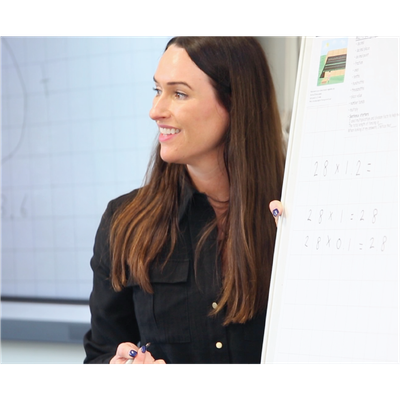
Learning in the early years
The first few years of a child’s life are especially important for mathematics development , says the National Center for Excellence in the Teaching of Mathematics.
Research shows that early mathematical knowledge predicts later reading ability and general education and social progress.
As young as eight months old, children are developing an awareness of number names , and include these in their speech, as soon as they begin to talk. As children listen to the talk around them, they are introduced to numbers through opportunities that occur in everyday life, and experience a variety of number rhymes. This supports their growing knowledge of number names.
According to the NCETM, there are:
Six key areas of mathematical learning
Cardinality and counting, composition.
- Shape and Space
Looking briefly at each in turn:
When children understand the cardinality of numbers , they know what the numbers mean in terms of knowing how many things they refer to.
Comparing numbers involves knowing which numbers are worth more or less than each other.
Learning to ‘see’ a whole number and its parts at the same time is a key development in children’s number understanding.
Developing an awareness of pattern helps young children to notice and understand mathematical relationships.
Shape and space
Mathematically, the areas of shape and space are about developing visualising skills and understanding relationships, such as the effects of movement and combining shapes
Measuring in mathematics is based on the idea of using numbers of units in order to compare attributes , such as length or capacity.
Learning to count in the early years is a fundamental skill and key to mastering mathematical concepts in the future, but there’s more to it than you might think, says Sabrina Pinnock, a primary school teacher in Yorkshire.
According to researchers Rochel Gelman and C.R. Gallistel, these are the steps needed to successfully count :
- The one-to-one principle: children must name each object they count and understand there are two groups: the one that has been counted and the one that hasn’t yet been counted
- The stable order principle: children must know how to count in the right order
- The cardinal principle: children need to understand the last number in the set is the total amount
- Counting anything: children need to realise that anything can be counted, not just objects that can be touched, but also things like claps and jumps
- Order of counting doesn’t matter: children need to understand that the order of counting in the set is irrelevant and will still lead to the same amount
Assessing children to find out which step they are struggling with is key to helping them overcome difficulties and become confident counters.
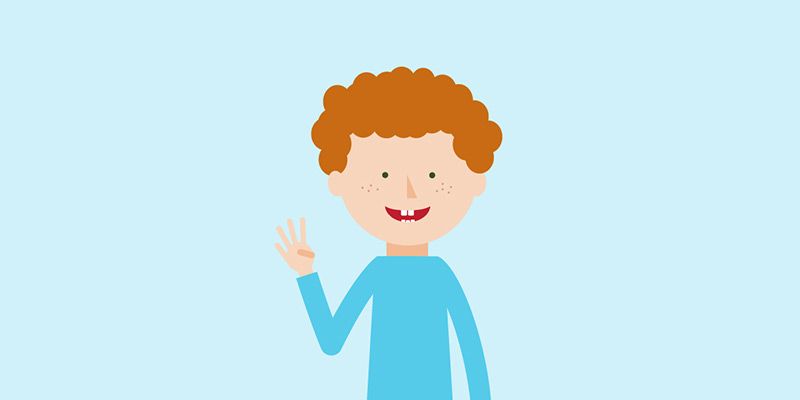
How do children develop counting skills?
Very young children start to count spontaneously and later begin to refine their skills by pointing their finger at the objects they are counting.
They will often try to get all the names of the numbers they know into their count as they pass their finger along the objects. They also reuse numbers. If they have not finished and they have used up all their known numbers, they will begin using the same numbers again. For example, a child might decide to count eight shells she collects at the beach. She might line them up carefully, tag numbers to them by pointing as she slides her finger along the shells, quickly counting out loud, “one, two, three, four, five, one, two, three, four, five, one, two, three.”
In their drive to make meaning, children are eager to experiment as they acquire new small bits of mathematical knowledge. It is extremely important to respect their developing understanding and not expect “perfect” counting sequences.
By valuing children’s partial understanding, children will develop enthusiasm for numbers and become confident mathematicians.
Activities to boost number sense in Reception Year
Children need lots of opportunities to develop number sense and deepen their conceptual understanding. Here are some simple activities to get your Reception Year learners counting:
Crowd control
Display the number of children allowed in each area using pictorial representations of cubes on a 10 frame. Once the children begin to realise how many are allowed in the area, they start to discuss the meaning of more and less. For example, “no more children are allowed in,” or “you can come in because one more than three is four.”
Encourage children to show numbers using their fingers above their head. “Bunny ears six” means they place their fingers above their head to show six. They may decide to use three fingers on each hand. As they become more confident, you could introduce swapping, where they show the same number but with a different configuration of fingers, in this case two and four, or five and one.
Grouping straws
Each morning, drop different amounts of art straws all over the carpet. Say something like, “oh no class, I can’t believe it. I’ve dropped all my straws again. They were all in 10s. Can you help me?” This activity helps children consolidate counting objects and gets them to think about stopping after they have made 10. Providing elastic bands helps them to keep track of their groups of 10.
Fastest 10 frames
This game can help distinguish between those who have developed a good understanding of number sense and those who need further support. Give each child their own frame and cubes. Tell them a number and observe how they place the cubes on the frame. If the children are working with the number eight, do they say each number name as they place the cube on the frame, or do they realise eight is two less than 10? If so, they should be able to place the cubes down faster than other children.
What do they do when you say the next number? For example, for the number five, do they automatically remove three cubes, or do they remove all of the cubes and start over counting from one to five?
Everyday questions to develop number sense
These questions for children aged five to six help develop their number sense and let them practice using mathematical terms.
When prepping lunch or a snack, count out the different types of food with your child, and as you lay the table, count out the different items. Ask your child questions like:
- How many grapes are there?
- How many tomatoes are there?
- How many plates are there?
Practice using the terms more than, fewer than and as many as by asking:
- Are there more grapes than tomatoes?
- Are there fewer tomatoes than grapes?
- Are there as many plates as people eating?
Remember to practice each sentence:
- There are more grapes than tomatoes
- There are fewer tomatoes than grapes
- There are as many plates as family members eating
When counting, make sure that you count one number for one item to strengthen your child’s sense of one-to-one correspondence.
Number Rhymes
Carefully select number rhymes to include those that children are familiar with from home. Make sure the rhymes include:
- Counting back and counting forward
- “No” or “none” (Five little ducks went swimming one day)
- Counting in pairs (two, four, six, eight, Mary at the cottage gate)
- Counting to five, 10 and beyond
Problem solving, reasoning and numeracy
The EYFS requires children to be supported in developing their understanding of problem solving, reasoning and numeracy in a broad range of contexts in which they can explore, enjoy, learn, practise and talk about their developing understanding. They must be provided with opportunities to practise these skills and gain confidence.
Young children learn best through play. For their learning to be effective, they need sensitive and informed support from adults.
All children can be successful with mathematics, provided they have opportunities to explore ideas in ways that make personal sense to them and opportunities to develop concepts and understanding. Children need to know that practitioners are interested in their thinking and respect their ideas.
Foundations
Maths — No Problem! Foundations is designed with all the theory and rigor that underpins a true mastery approach. It meets all the requirements of the national curriculum’s Early Years Foundation Stage. But Maths — No Problem! Foundations doesn’t shy away from embedding learning through play in Reception.
Genuine learning through play in the early years is something the team at Maths — No Problem! gets very excited about. What may appear to be simple games are actually carefully designed activities that have a deep maths mastery focus.
Maths — No Problem! Foundations is a complete Reception programme that includes Workbook Journals, Picture Books, and online Teacher Guides with printable resource sheets, all in one package.
The Maths — No Problem! suite of products — including textbooks, workbooks, a revolutionary online assessment tool, world-class teacher training, and much more — is based on the Singapore method, which combines 30 years of international research with painstaking craftsmanship and constant refinement.
Mark making
Research from Carruthers and Worthington into children’s mathematical graphics reveals young children use their own marks and representations to explore and communicate their mathematical thinking. These graphics include:
- Scribble-marks
- Tally-type marks
- Invented and standard symbols including numerals
Young children’s graphical exploration “builds on what they already know about marks and symbols and lays the foundations for understanding mathematical symbols and later use of standard forms of written mathematics,” the researchers said.
In a 2009 publication, the UK Department for Children, Schools and Families, says practitioners should: “Value children’s own graphic and practical explorations of problem solving” and observe “the context in which young children use their own graphics.”
Developing understanding with careful questioning
When children play and interact with other children, there are always opportunities for maths talk to help them develop a deep understanding, says Sabinra Pinnock.
For instance:
- I have made a pattern. What’s your pattern?
- How many blocks taller is my model compared to yours?
- How do we know this area is full?
- I have three cars, how many do you have?
- Do you have more?
- How do you know?
Give learners long enough to think about their answer and give their response, but not so long that it disrupts the flow of play.
Adding maths talk activities to your daily routine
Developing maths talk in your daily routine gives learners a chance to understand concepts while using real-life concepts. It also means that children can consolidate what they have learned.
The following activities can get you started:
How many children are at school?
Get your class to work out how many children are at school by placing a picture of themselves or a counter representation on large 10 frames. Ask them questions like:
- How do we know this 10 frame is full?
- How many children are absent?
- What can you tell me about number seven?

Sorting and grouping objects as a class
Sorting and grouping objects as a class helps children learn to reason and look for patterns. Give them a variety of buttons each day and ask open-ended questions like, “how can we sort the buttons?” They can use critical-thinking skills to come up with a range of ideas like sorting by size, colour, pattern, and shape.
Vote for a story
First, ask a child to pick two books. Everyone in the class gets to vote (using a piece of lego, for instance) on which of the books should be read. Tally the votes at the end of the day to determine the winner. This can lead to questions such as:
- How many more votes did one book have than the other?
The key to introducing mastery in the early years is to keep activities fun and part of your daily routine. The more learners explore maths through play, the more engaged they become.
Pattern Awareness
Dr. Sue Gifford, emeritus fellow at University of Roehampton, says recent research shows a child’s ability to spot mathematical patterns can predict later mathematical achievement, more so than other abilities such as counting. It also shows pattern awareness can vary a great deal between individuals.
Australian researchers, Papic, Mulligan and Mitchelmore have found pattern awareness can be taught effectively to preschoolers, with positive effects on their later number understanding.
Explicitly teaching pattern awareness links to encouraging “pattern sniffing” with older children in order to develop mathematical understanding and thinking.
What is mathematical pattern awareness?
Patterns are basically relationships with some kind of regularity between the elements. In the early years, Papic et al suggest there are three main kinds:
- Shapes with regular features, such as a square or triangles with equal sides and angles, and shapes made with some equally spaced dots
- A repeated sequence: the most common examples are AB sequences, like a red, blue, red blue pattern with cubes. More challenging are ABC or ABB patterns with repeating units like red, green, blue or red, blue, blue
- a growing pattern, such as a staircase with equal steps
Children who are highly pattern aware can spot this kind of regularity: they can reproduce patterns and predict how they will continue.
Why is pattern awareness important?
Spotting underlying patterns is important for identifying many different kinds of mathematical relationships. It underpins memorization of the counting sequence and understanding number operations, for instance recognizing that if you add numbers in a different order their total stays the same.
Pattern awareness has been described as early algebraic thinking, which involves:
- Noticing mathematical features
- Identifying the relationship between elements
- Observing regularities
The activity Pattern Making focuses on repeating patterns and suggests some engaging ways of developing pattern awareness, with prompts for considering children’s responses. Children can make trains with assorted toys, make patterns with twigs and leaves outside or create printing and sticking patterns in design activities.
Repeating Patterns
It is important to introduce children to a variety of repeating patterns, progressing from ABC and ABB to ABBC.
Focusing on alternating AB patterns can result in some young children thinking that ‘blue, red, red’ can’t make a pattern. They say things like, “That’s not a pattern, because you can’t have two of the same colour next to each other.”

Cognitive Load Theory
Cognitive Load Theory has gained a lot of traction in recent years as educators embrace evidence-based research to inform their evolving practice, says Ross Deans, a KS2 teacher and maths lead in Bournemouth, England.
What is Cognitive Load Theory and why is it important?
Why are new teachers so overwhelmed by tasks that more experienced teachers can juggle alongside multiple other responsibilities?
The answer is simple — new skills demand more attention.
This logic can be applied to any situation. When learning to drive, for example, you focus carefully on every small detail. That mental exertion can be very demanding. Compare that to the feeling of driving after you’ve been doing it for years; you may barely remember the drive, the process is so familiar.
Now put yourself in the shoes of your pupils. Each lesson provides fresh learning and new skills to master. Consider what happens inside your learners’ heads when they encounter new information, new skills and new vocabulary.
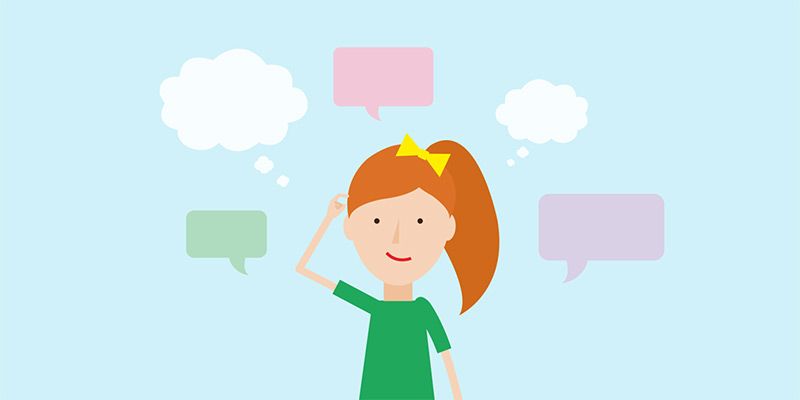
Working memory
Cognitive Load Theory , originated by John Sweller, acknowledges that working memory is very limited.
Working memory is the information we hold in our minds while we’re learning. The number of things that we can keep in working memory at one time is approximately four, plus or minus one, and perhaps even less for children.
It’s important to keep this in mind when planning and delivering lessons. If our learners cannot balance more than four things in their working memory, then we need to be very careful about the information we choose to present to them.
Intrinsic versus extraneous load
Intrinsic load includes anything that is necessary to learn a desired skill. In other words, the essential stuff.
Extraneous load is anything that will detract from desired learning. In other words, the stuff that should be reduced as much as possible.
It can be tempting while teaching to embellish lessons with child-friendly imagery and gimmicks. While It’s important to foster enjoyment, we should avoid distracting learners from the essential components of a lesson.
Supporting the transition to long-term memory
While acknowledging the impact of Cognitive Load Theory, we can consider the following to support our learners:
Focused learning objective
First and foremost, we must have a very clear idea of what we want our learners to achieve. Keep the limitations of the working memory in mind and let this guide the content you choose to include in a lesson.
Activate prior learning
At the start of the lesson, you may choose to design a task that encourages learners to retrieve essential skills. This means their working memory can hold on to new learning during the lesson.
Present information clearly
Take time when designing lessons to make sure information is presented clearly. Avoid unnecessary extras which may detract from the learning goal. Keep slides clean and similar in style.
Avoid cognitive overload
In maths, problems are often detailed and complex. Consider breaking questions up into chunks so that learners can digest each part separately. By taking away the final question, you can make a maths problem goal-free.
Maths mastery for Early Years
Given the importance of developing sound mathematical understanding in the early years, the maths mastery approach can be especially useful, considering its focus on problem solving and whole-class learning.
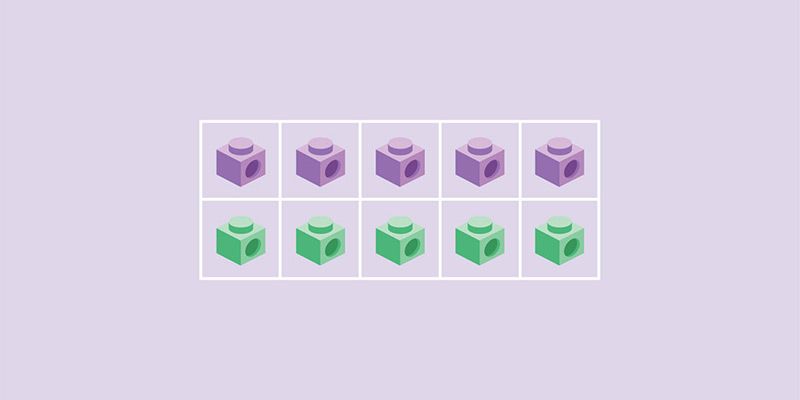
Early Years and CPA
If you’re teaching the Concrete, Pictorial, Abstract (CPA) approach in the early years, it’s best to focus on C and P. Here’s how to use concrete and pictorial representations effectively.
The CPA model works brilliantly in the primary years but for the youngest learners, moving onto abstract concepts too soon causes difficulties. Spending as much time as possible with concrete objects and pictorial representations helps children master number skills.
By the time they reach Key Stage 2, children need to develop their understanding of numbers by being able to visualise what the concrete looks like in their heads. Therefore, it’s positive that the revised EYFS framework focuses on numbers just to 10, from 20 previously.
If learners develop a deep understanding of numbers to 10, their chances of understanding larger numbers increases significantly.
C is for concrete
Concrete is the “doing” stage. During this stage, students use concrete objects to model problems. Unlike traditional maths teaching methods where teachers demonstrate how to solve a problem, the CPA approach brings concepts to life by allowing children to experience and handle physical (concrete) objects.
Spending time with real-life objects
The theorist Jerome Bruner stresses the importance of children spending time learning maths through tangible items. Spending lots of time using real-life objects, solving real-life problems, and manipulating abstract concrete objects (when ready) such as cubes and counters is essential in the early years.
Ideas include counting out fruit for snack time, comparing, sorting and counting a range of different buttons, pasta, and even ‘magic beans’ linked to specific topics.
Early years and number bonds
By mastering number bonds early on, pupils build the foundations needed for subsequent learning and are better equipped to develop mental strategies and mathematical fluency. By building a strong number sense, pupils can decide what action to take when trying to solve problems in their head.
How to teach number bonds
Children are usually introduced to number bonds through the Concrete, Pictorial, Abstract approach . Here��’s just one way to introduce and teach number bonds.
Concrete step
Children start out by counting familiar real-world objects that they can interact with. They then use counters to represent the real-world objects. From here, they progress to grouping counters into two groups.
By putting five counters into two groups, children learn the different ways that five can be made. For example, 3 and 2 as illustrated below. With further exploration, children work out other ways to break numbers into two groups.
Pictorial step
Now that they understand the concept with hands-on objects and experience, children progress to writing number bonds in workbooks or on whiteboards. Early number bond explorations might simply reflect the two groups of counters that they created during the concrete step, along with other combinations.
Abstract step
With the concrete and pictorial steps done and dusted, children progress to representing abstract problems using mathematical notation (for example, 3 + 2 = 5).
Early Years and place value
Number and place value are foundational concepts for all mathematics learning. This means we need to address how to teach place value as early as possible so that pupils can secure their knowledge of the concept.
How do you develop an early understanding of place value in the primary school classroom? Let’s start by defining place value. It is a system for writing numerals where the position of each digit determines its value. Each value is a multiple of a common base of 10 in our decimal system.
Here are some teaching strategies I’ve found useful when helping learners develop an early understanding of place value.
Progress through concepts systematically
Developing an understanding of place value requires systematic progression. Each new concept should build on previous learning experiences so that pupils can gain deeper, relational understanding as they go.
This approach ensures knowledge is developed, refined and applied correctly as numbers become meaningful tools for solving problems rather than just a series of symbols on a page. Most importantly, this starts our learners on the path to becoming confident problem solvers and pattern spotters.
Use the CPA approach to establish meaning
The CPA ( Concrete, Pictorial, Abstract ) approach helps pupils connect a physical representation of a number (concrete manipulatives) to that same quantity as shown in drawings or graphics (pictorial), and finally to the actual written name and symbol for that number (abstract).
Concrete resources are meaning makers. They add meaning to abstract representations of numbers so that when learners progress to the abstract phase, they know what those numbers stand for, what they mean, and how they relate to each other.
If a pupil can identify the meaning of each component in a problem, they are far more confident in how they work to solve it.
Teach the ‘10-ness of 10’
At an early level, spend as much time as possible studying the numbers from 0 to 10, as understanding the 10-ness of 10 is crucial for maths attainment, and it cannot be rushed.
Once this understanding is locked-in, follow this with an introduction to number bonds. Start with the additive relationships between numbers less than 10, then progress to adding and subtracting up to 10. This ensures that learners see 10 as an important ‘base’ number in all of their future maths applications.
Progress to 20, then to 40
I make sure to take my time teaching 10 and teen numbers so that a solid understanding of place value with numbers up to 20 is properly established.
I then extend the place value concept by working with numbers up to 40 — followed by addition and subtraction to 40.
Because pupils have learned to make 10 and use number bonds, they are ready to begin working with multi-digit numbers and regrouping. Focusing on numbers to 40 while developing the concept of place value also allows learners to associate numbers with easily-managed, physical quantities (meaning makers).
Use base 10 blocks for 100 and 1000
The work we’ve done building a gradual understanding of place value will have prepared pupils to progress to three-digit numbers. So we can now move on to studying up to 100.
We start here by developing an understanding of numbers in multiple place value representations. For example, one thousand five hundred is 15 hundreds or 150 tens.
Once they get the hang of that, learners then sharpen their counting, reading, and writing skills for numbers up to 1,000. Moving into addition and subtraction with numbers up to 1,000 — with and without regrouping — is the next step.
Here is where our work establishing an early understanding of place value is key, because pupils will intrinsically know why these algorithms work for three and four-digit numbers. Base 10 blocks are a great tool to help solidify those earlier place value ideas when working with numbers up to the thousands.
Approach larger numbers the same way
The CPA approach is once again our answer to learning place value in larger numbers. Apply those skills and always be on the lookout for chances to extend number and place value concepts.
For example, you can identify and complete number patterns or find missing digits on a number line.
From there you can explore strategies for mental mathematics as well as addition and subtraction for numbers up to 10,000. Take learners even deeper by having them explore place value with an emphasis on multiplication, division, and decimals.
Mastering maths concepts like place value in the early years is not just key to success in the classroom. It prepares learners for a lifetime of deep mathematical understanding by giving them invaluable real-world tools like resilience and problem-solving ability.
And a confident problem solver in maths is a confident problem solver in life.
Well done on making it to the end of our Ultimate Guide to Early Years.
We’ve looked at the definition of Early Years and what the government recommends in its revised guidance, and we’ve taken a deep dive into some of the most-effective strategies for teaching mathematics mastery in the Early Years.
We’ve also discussed Cognitive Load Theory and what it means for teachers in the Early Years classroom.
If you’d like to learn more about Early Years, we recommend checking out the following links:
- NCETM: How Early Years children develop mathematical thinking (Podcast)
- NRICH: Early Years Foundation Stage Homepage
- The School of School: Episode 17 Play and early years (Podcast)
- Maths — No Problem! CPA approach
Also, don’t miss our other Ultimate Guides:
- The Maths — No Problem! Ultimate Guide to Maths Mastery
- The Maths — No Problem! Ultimate Guide to Assessment
By clicking “Accept All” , you agree to the storing of cookies on your device to enhance site navigation, analyze site usage and assist in our marketing efforts.
Popular searches in the last week:
- Maths: Open-ended Investigations
- Mathematical Problem-solving
Reception Maths: Open-ended Investigations Mathematical Problem-solving
Problem-solving tasks develop mathematical skills and problem-solving tactics. These open-ended investigations for Reception or Early Years settings are designed to take advantage of outdoor learning environments, but many of them can be adapted to run inside.
Session 1 Shape
Open-ended investigative tasks provide fun, stimulating contexts in which children can connect previous knowledge with new situations, develop mental flexibility, practise mathematical vocabulary and reason mathematically.
Print the sheets and stick them up in suitable play areas. They provide stimulating questions that will enable adults in your classroom to facilitate good mathematical language and learning. Each illustrated activity comes with a list of skills practised that you can use for assessment.
Open-Ended Task
Shape Hunt By looking for and finding shapes, children gain an awareness of similarities of shapes in the environment. They match shapes by recognising similarities and orientation, show curiosity and observation by talking about shapes and begin to use mathematical names for shapes.
More Shapes By looking for and finding shapes formed by windows, children gain an awareness of shapes, practise matching them, and begin to use mathematical names for them. Use language such as ‘square’ to describe the shape of solids and flat shapes.
- More Shapes
Sorting While playing with and arranging twigs, stones, leaves, etc., children can be encouraged to take an interest in shape and space. They can talk about similarity and difference, while sorting objects. Developing mathematical ideas and methods can be used to solve practical problems.
Session 2 Position and Direction
Trails Remember… just about anything you do indoors in maths can be done outside. Some children ‘come alive’ once out of the classroom and may just surprise you with the observations they make or the learning behaviours they show.
Scooters, Bikes, Trikes Riding a scooter, bike or trike prompts counting, consideration of same and different, and position and spatial properties.
- Scooters, Bikes, Trikes
- The Mathematical Journey
Obstacle course Children use everyday language to talk about position, distance and time when running, or walking, an obstacle course. They compare quantities and objects and solve problems.
- Obstacle Course
Milk the Maths: Wellies Encourage children to use everyday language to talk about position whatever they are doing! Putting wellies away is a colourful opportunity.
- Milk the Maths
Session 3 Number and Shape
Holes When digging holes children can use number names in order in familiar contexts. They can use everyday language to talk about size, capacity, position, distance and time. Holes offer fun opportunities to compare quantities and objects and to solve problems.
The Mud Kitchen Ask children questions about shape, space and measure while exploring mud. Consider similarities and differences.
- Mud Kitchen
Planting and Gardening While working in a school garden, children can practise using numbers to identify how many objects there are in a set. They say and use number names in order in familiar contexts, and count everyday objects.
- Planting and Gardening
Hoist Playing with a bucket on a hoist, children can use numbers to identify how many objects there are in a set. They can use everyday language to talk about size, capacity, position, distance and time and compare quantities and objects and to solve problems.
Session 4 Number and the Language of Addition/Subtraction
Leaves When playing with leaves, children have opportunities to see that numbers identify how many objects there are in a set and to say and use number names in order in familiar contexts. They can begin to use the vocabulary involved in adding and subtracting. They can relate addition to combining two and subtraction to ‘taking away’.
Tin Can Alley Play with cans to explore number names in familiar contexts and to.count up to 10 everyday objects. Children can begin to use the vocabulary involved in adding and subtracting and to relate addition to combining two groups of objects and subtraction to ‘taking away’.
- Tin Can Alley
Sand to Sandpit Children can fill a sandpit (or move sand from one place to another) and count up to 10 everyday objects and begin to use the vocabulary involved in adding and subtracting.
- Sand to Sandpit
Logs Put logs onto a trolley and say and use number names in order in familiar contexts. Count and use vocabulary involved in adding and subtracting. Show curiosity and observation by talking about shapes. Begin to use mathematical names for shapes.
More Logs Playing with logs offers countless opportunities to practise counting! Children can also begin to use the vocabulary involved in adding and subtracting and to relate addition to combining two groups of objects and subtraction to ‘taking away’.
This site uses cookies to give you the most relevant information. Learn more
Log in or sign up to get access to this resource
School subscription, reduce teacher workload.
From £155 (+ VAT) per year. Access to all key stages for multiple users.
Individual Subscription
For inspirational teaching.
Just £45 (£37.50 + VAT) per year to get access to all resources.
Early Career Teacher
Develop your teaching.
Just £33 (£27.50 + VAT) to get access to all resources for 2 years.
Taster Account
100s of resources.
Register to access all free resources.
Already subscribed?
Log in to get access.
Cookie Consent
We use cookies to help provide a better website experience for you, and help us to understand how people use our website. Our partners will also collect data and use cookies for ad personalisation and measurement.
Clicking "Accept" will allow us and our partners to use cookies, learn more in our cookie policy or to change your cookie preferences, click "Manage".
To find out more about cookies and the types of cookies we are setting please visit our cookie policy .
If you'd prefer that certain types of cookie are not saved on your browser when visiting our website, use the toggles below to adjust those preferences and click "Save choices".
Strictly Necessary
These cookies are necessary for the website to function and without them you would not be able to reliably use the website. For example, logging into your account or completing forms.
Analytics Cookies
A series of cookies that collect anonymised data on how users interact with our website. This anonymous data helps us improve the website with a focus on its users, for example, ensuring the most popular content is easier to access.
View associated providers +
Marketing Cookies
These cookies track your online activity to help advertisers deliver more relevant and personalised advertising or to limit how many times you see an ad. These cookies can share that information with other organisations or advertisers.
- STEM Ambassadors
- School trusts
- ITE and governors
- Invest in schools
- Student programmes
- Benefits and impact
- Our supporters
- Advertising and sponsorship
- Become a STEM Ambassador
- Request a STEM Ambassador
- Employer information
- Training and support
- STEM Ambassadors Partners
- Working with community groups
- Search icon
- Join the STEM Community
Problem solving with EYFS, Key Stage One and Key Stage Two children
These three resources, from the National Strategies, focus on solving problems.
Logic problems and puzzles was designed to help students become proficient problem solvers in mathematics and identifies the strategies students might draw upon and use to solve them, and the learning approaches teachers can plan to use.
There are two lessons for each age group. Progression has been built in across the two lessons in each year group, and there is also progression across the years. Each lesson plan contains the objectives from the Framework, vocabulary, prior knowledge required and possible learning outcomes.
Finding all possibilities focuses on one particular strategy, finding all possibilities.
The booklet contains examples and lesson plans for each year group in which this strategy is required to solve the problem. Each plan contains the objectives linked to the Framework, the vocabulary used, any prior knowledge required and possible learning outcomes. Other resources that would enhance the problem solving process are listed, these include practical apparatus, the use of ICT and in particular the Interactive Teaching Programs .
Finding rules and describing patterns focuses on problems that fall into the category 'patterns and relationships'. There are seven activities across the year groups. Each activity includes objectives, learning outcomes, resources, vocabulary and prior knowledge required. Each lesson is structured with a main teaching activity, drawing together and a plenary, including probing questions.
Show health and safety information
Please be aware that resources have been published on the website in the form that they were originally supplied. This means that procedures reflect general practice and standards applicable at the time resources were produced and cannot be assumed to be acceptable today. Website users are fully responsible for ensuring that any activity, including practical work, which they carry out is in accordance with current regulations related to health and safety and that an appropriate risk assessment has been carried out.
Show downloads
| Subject(s) | Computing, Mathematics |
|---|---|
| Age | 5-7, 7-11 |
| Published | 2000 - 2009 |
| Published by | |
| Collections | |
| Direct URL |
Share this resource
Did you like this resource, lists that tag this content, problem solving , posted by rachel jackson, mathematics: problem solving and investigations , posted by stephen lyon.
- Skip to primary navigation
- Skip to main content
- Skip to primary sidebar
Early Years Careers
How to promote problem solving in the early years
5th November 2015 by Kelly Leave a Comment
Ways to incorporate problem solving in the Early Years
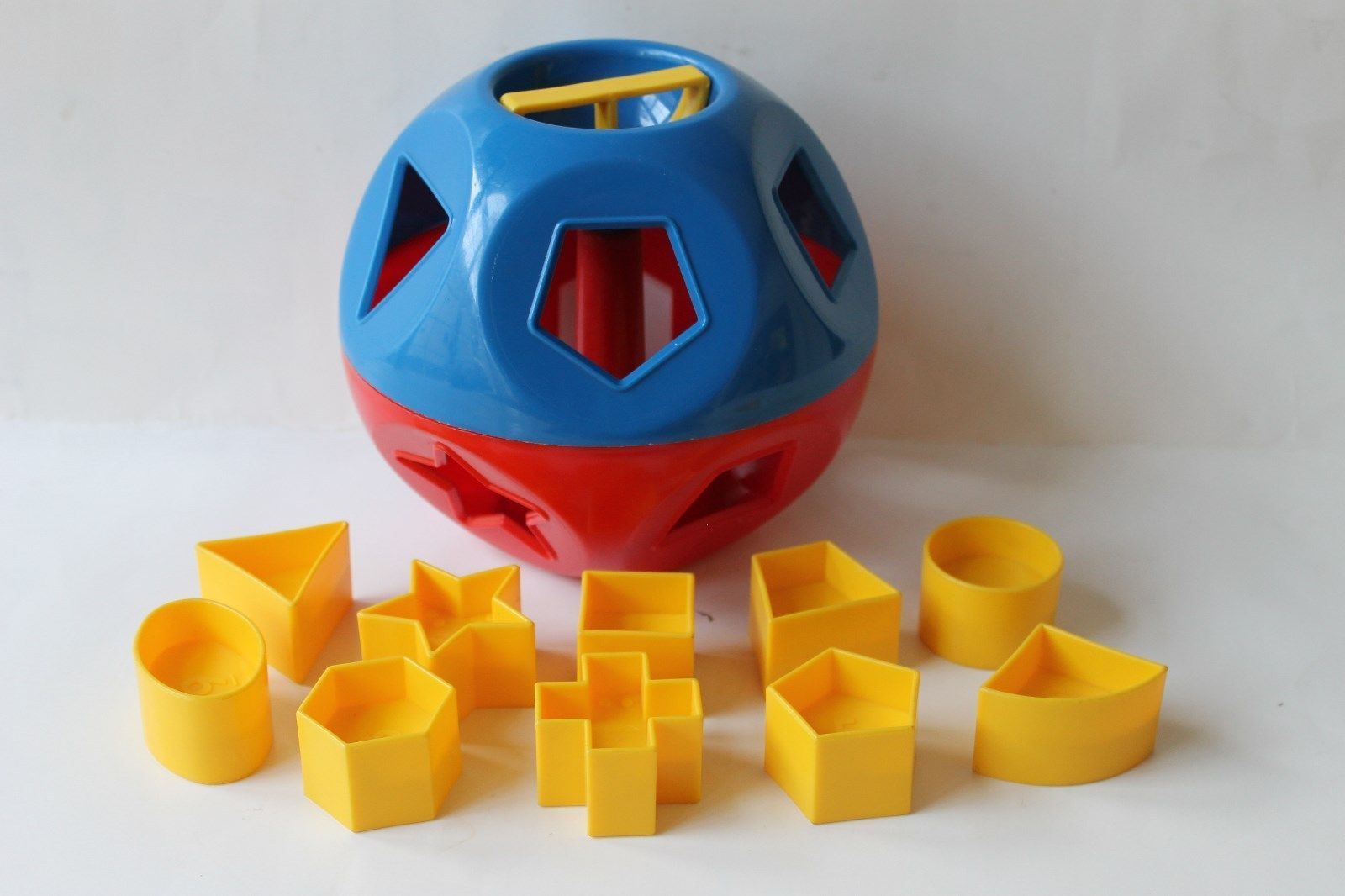
Developing problem solving skills is an area of development early years ’ practitioners are familiar with, and the importance of developing these problem solving skills is well known, but what exactly are problem solving skills? And how do we encourage children to develop these?
Within the Early Years Foundation Stage, problem solving comes under the category Mathematical Development, however this does not limit problem solving to just mathematical circumstances! There are opportunities for children in early years to explore problem solving every day, within all aspects of their development. Children are natural problem solvers from birth, all the way from learning to communicate problems through crying, through learning to talk and learning to walk. They develop a natural problem solving process through trial and error, for example, an infant will fall down many times before taking their first steps, but it’s the process of getting back up and trying again which helps them to achieve their goal.
Although problem solving can occur naturally, practitioners should still encourage children to recognise the process of problem solving and become familiar with it.
Shape sorters are a great activity for younger children to explore problem solving through trial and error. The children can get a feel of the shapes and see the holes, but will not yet have the knowledge of shapes to place the correct shape in the correct hole, they will attempt to fit shapes into holes, and when they realise it will not fit, they move onto the next hole. As the children get older, they can apply their knowledge and learning to this activity, understanding that the square shape will fit with the square hole, thus overcoming a problem. Jigsaws are another effective way of children developing problem solving skills in the early years. With younger children larger puzzle pieces can be used made out of tactile materials and they can attempt to solve the jigsaw through trial and error again. Slightly older children can expand onto smaller puzzle pieces, once they have mastered more simple jigsaws. Practitioners should take note of the different strategies children use in order to fit different puzzle pieces together and offer directional help such as matching the colours of pieces together should a child become frustrated.
Early Years practitioners can help children apply problem solving skills to real life situations as well as various activities. For example, practitioners can encourage children to help set up at meal times, but pose them with a problem of not having enough cutlery for each child. Children could be able to recognise this problem, or be guided by the practitioners to realise that not enough cutlery could pose a problem. Practitioners can then encourage and support the children to think of a solution to this problem. Allow children to use their imagination to solve problems, the sky is the limit! If they suggest sharing cutlery or even crafting their own cutlery out of different items, then this is all part of the problem solving process! They are recognising a problem and attempting a solution.
Overall, there are many activities and real life scenarios practitioners can implement in order to help children explore problem solving skills and guide them to create a solution. Using numbers and mathematics are not the only methods of developing problem solving skills as seen from above, but they can be an effective way to develop learning numeracy skills which can help in later life.
Related Posts:

Reader Interactions
Leave a reply cancel reply.
Your email address will not be published. Required fields are marked *
- Our Mission
There has been an error with the video.
Using a Plan of Attack for Math Problem-Solving
Spending the majority of their time modeling problems and making sense of relationships in math can help students move beyond a surface-level grasp.
At every grade level, math teachers in the Success Academy Charter Schools Network in New York City ask students to spend the lion’s share of their time during math lessons deeply examining the question they are being asked to solve. Students start by asking themselves questions like, “What are the mathematical relationships in the problem?” “What is this problem asking me to do?” and “How can I model my thinking?” Every classroom even has a formula—a problem-solving plan for math, printed out and displayed on the wall—called the “Plan of Attack,” which includes three parts: using 80 percent of the allotted time to conceptualize the question by reading the problem multiple times, then modeling the relationships and actions in the problems; 10 percent to answer the question by determining a strategy they will use to solve it and then computing; and finally double-checking in the last 10 percent of their time—by rereading the problem, evaluating their own reasoning, and checking computations for accuracy.
First-grade teacher Evelyn Gonzales and eighth-grade teacher Fei Liu both reinforce this strategy during precious class time by working through the problem as a whole with their students first, emphasizing the importance of this step before rushing in to solve. As a result, their students develop a much stronger understanding of the mathematical concepts at hand. “In my classroom, I don’t really care for the answer,” says Liu. “They can double-check once they have the answer. What we really need to focus on is why we set the things up, so that when they see a problem, they have an idea of where to start to think.”
The network led the state for math test scores in the 2023–2024 school year, with with 49 percent of Black and 55 percent of Hispanic students earning fours, the highest possible mark.
See all of Edutopia’s coverage of Success Academy Charter Schools to learn more about the network.
Success Academy Charter Schools
- International
- Education Jobs
- Schools directory
- Resources Education Jobs Schools directory News Search

Year 8 Maths Worksheet - Algebra Problem-Solving (Answers Included)
Subject: Mathematics
Age range: 11-14
Resource type: Worksheet/Activity
Last updated
11 September 2024
- Share through email
- Share through twitter
- Share through linkedin
- Share through facebook
- Share through pinterest

This worksheet is aimed at Year 8-9 students and covers solving and using linear equations in a range of contexts, which students tend to find more challenging. In this sheet, students will use algebra to find perimeters and areas of shapes, find equations of lines, and be introduced to basic simultaneous equations (which requires no prior knowledge of these, just intuition), to provide a more challenging sheet to really stretch your students. This worksheet is designed to take approximately 40 minutes, and so is perfect for homework, or for use in class!
The Embermaths Year 7/8 Maths Worksheets Complete Bundles are out now!
Tes paid licence How can I reuse this?
Get this resource as part of a bundle and save up to 26%
A bundle is a package of resources grouped together to teach a particular topic, or a series of lessons, in one place.
Year 8 Maths Worksheets - Complete Bundle (Answers Included)
This bundle contains all of the Embermaths Year 8 worksheets range, (aimed at Year 8 but can be used for Years 7-9), with a range of topics including: * Solving linear equations, and using algebra in contextual situations * 2D and 3D shapes, involving perimeter, area, volume, density and angles rules * Straight line graphs * Arithmetic sequences * Ratio * Proportionality * Basic statistics * Using a calculator * Percentages and interest * Rounding and estimation The worksheets are designed to take between 30-60 minutes depending on sheet, making them perfect for work in-class, home learning or for homework! All sheets come with answers included, and are designed to challenge your students through maths in a range of question types and contexts, to really test their understanding. Consider leaving a review, and don't hesitate to contact me on Instagram with any queries!
Your rating is required to reflect your happiness.
It's good to leave some feedback.
Something went wrong, please try again later.
This resource hasn't been reviewed yet
To ensure quality for our reviews, only customers who have purchased this resource can review it
Report this resource to let us know if it violates our terms and conditions. Our customer service team will review your report and will be in touch.
Not quite what you were looking for? Search by keyword to find the right resource:
To revisit this article, visit My Profile, then View saved stories .
- The Big Story
- Newsletters
- Steven Levy's Plaintext Column
- WIRED Classics from the Archive
- WIRED Insider
- WIRED Consulting
OpenAI Announces a New AI Model, Code-Named Strawberry, That Solves Difficult Problems Step by Step

OpenAI made the last big breakthrough in artificial intelligence by increasing the size of its models to dizzying proportions, when it introduced GPT-4 last year. The company today announced a new advance that signals a shift in approach—a model that can “reason” logically through many difficult problems and is significantly smarter than existing AI without a major scale-up.
The new model, dubbed OpenAI o1, can solve problems that stump existing AI models, including OpenAI’s most powerful existing model, GPT-4o . Rather than summon up an answer in one step, as a large language model normally does, it reasons through the problem, effectively thinking out loud as a person might, before arriving at the right result.
“This is what we consider the new paradigm in these models,” Mira Murati , OpenAI’s chief technology officer, tells WIRED. “It is much better at tackling very complex reasoning tasks.”
The new model was code-named Strawberry within OpenAI, and it is not a successor to GPT-4o but rather a complement to it, the company says.
Murati says that OpenAI is currently building its next master model, GPT-5, which will be considerably larger than its predecessor. But while the company still believes that scale will help wring new abilities out of AI, GPT-5 is likely to also include the reasoning technology introduced today. “There are two paradigms,” Murati says. “The scaling paradigm and this new paradigm. We expect that we will bring them together.”
LLMs typically conjure their answers from huge neural networks fed vast quantities of training data. They can exhibit remarkable linguistic and logical abilities, but traditionally struggle with surprisingly simple problems such as rudimentary math questions that involve reasoning.
Murati says OpenAI o1 uses reinforcement learning, which involves giving a model positive feedback when it gets answers right and negative feedback when it does not, in order to improve its reasoning process. “The model sharpens its thinking and fine tunes the strategies that it uses to get to the answer,” she says. Reinforcement learning has enabled computers to play games with superhuman skill and do useful tasks like designing computer chips . The technique is also a key ingredient for turning an LLM into a useful and well-behaved chatbot.
Mark Chen, vice president of research at OpenAI, demonstrated the new model to WIRED, using it to solve several problems that its prior model, GPT-4o, cannot. These included an advanced chemistry question and the following mind-bending mathematical puzzle: “A princess is as old as the prince will be when the princess is twice as old as the prince was when the princess’s age was half the sum of their present age. What is the age of the prince and princess?” (The correct answer is that the prince is 30, and the princess is 40).
“The [new] model is learning to think for itself, rather than kind of trying to imitate the way humans would think,” as a conventional LLM does, Chen says.
OpenAI says its new model performs markedly better on a number of problem sets, including ones focused on coding, math, physics, biology, and chemistry. On the American Invitational Mathematics Examination (AIME), a test for math students, GPT-4o solved on average 12 percent of the problems while o1 got 83 percent right, according to the company.

The new model is slower than GPT-4o, and OpenAI says it does not always perform better—in part because, unlike GPT-4o, it cannot search the web and it is not multimodal, meaning it cannot parse images or audio.
Improving the reasoning capabilities of LLMs has been a hot topic in research circles for some time. Indeed, rivals are pursuing similar research lines. In July, Google announced AlphaProof , a project that combines language models with reinforcement learning for solving difficult math problems.
AlphaProof was able to learn how to reason over math problems by looking at correct answers. A key challenge with broadening this kind of learning is that there are not correct answers for everything a model might encounter. Chen says OpenAI has succeeded in building a reasoning system that is much more general. “I do think we have made some breakthroughs there; I think it is part of our edge,” Chen says. “It’s actually fairly good at reasoning across all domains.”
Noah Goodman , a professor at Stanford who has published work on improving the reasoning abilities of LLMs, says the key to more generalized training may involve using a “carefully prompted language model and handcrafted data” for training. He adds that being able to consistently trade the speed of results for greater accuracy would be a “nice advance.”
Yoon Kim , an assistant professor at MIT, says how LLMs solve problems currently remains somewhat mysterious, and even if they perform step-by-step reasoning there may be key differences from human intelligence. This could be crucial as the technology becomes more widely used. “These are systems that would be potentially making decisions that affect many, many people,” he says. “The larger question is, do we need to be confident about how a computational model is arriving at the decisions?”
The technique introduced by OpenAI today also may help ensure that AI models behave well. Murati says the new model has shown itself to be better at avoiding producing unpleasant or potentially harmful output by reasoning about the outcome of its actions. “If you think about teaching children, they learn much better to align to certain norms, behaviors, and values once they can reason about why they’re doing a certain thing,” she says.
Oren Etzioni , a professor emeritus at the University of Washington and a prominent AI expert, says it’s “essential to enable LLMs to engage in multi-step problem solving, use tools, and solve complex problems.” He adds, “Pure scale up will not deliver this.” Etzioni says, however, that there are further challenges ahead. “Even if reasoning were solved, we would still have the challenge of hallucination and factuality.”
OpenAI’s Chen says that the new reasoning approach developed by the company shows that advancing AI need not cost ungodly amounts of compute power. “One of the exciting things about the paradigm is we believe that it’ll allow us to ship intelligence cheaper,” he says, “and I think that really is the core mission of our company.”
You Might Also Like …
In your inbox: The best and weirdest stories from WIRED’s archive
How the brain decides what to remember
The Big Story: Meet Priscila, queen of the rideshare mafia
Silicon Valley's soulless plutocrats flip for Donald Trump
Event: Join us for The Big Interview on December 3 in San Francisco


COMMENTS
But if maths seems scary for some people, then maths problem-solving can cause even more anxiety. There is no 'safety net' of knowing the 'correct answer' beforehand. This is because maths problem-solving lends itself to investigation and exploration with lots of possible tangents. Understandably this is often the area of maths where ...
Mathematics is one of the seven areas of learning defined by the Early Years Foundation Stage. This fantastic collection of EYFS maths problem-solving activities has been specially created to help you provide learning resources and adult-input plans, that are meaningful and valuable to skill development in this particular area.
However, problem-solving is much more than number conundrums. Problem-solving is a key part of early years development and can support learning across many of the My First Five Years streams. The skill of problem-solving starts developing very early in a child's life and stems from the knowledge of the world that they are constantly building.[1].
Problem Solving, Reasoning and Numeracy in the Early Years Foundation Stage This booklet focuses on children's mathematical development, which is explored in the area of learning and development entitled Problem Solving, Reasoning and Numeracy (PSRN) in the Early Years Foundation Stage (EYFS) (DCSF, 2008).
The teacher counts aloud as Ben lifts each finger, stopping at five. "I need five cakes then," Ben says. "Yes," the teacher agrees, "you need one more cake, and then there is one for each teddy". 3. Reminding. Educators can prompt children to remember and apply a previous strategy to solve a mathematical problem.
The NRICH Early Years resources aim to further develop children's natural problem-solving abilities in the context of mathematics. Through explicitly and repeatedly providing children with opportunities to develop key problem-solving skills. In an Early Years (EY) setting, I would suggest that the first and third of these are particularly ...
Paper Cards. Coloured Pencils. LEGO Blocks. . 3. Challenge the children's maths skills to solve a missing number mystery. Missing Number Math Activity by Planning Playtime. This Early Years maths game: Write number sequences on craft sticks and remember to leave some blanks in between.
Bus-Themed Ten-Frame and Counters Activity. 4.9 (7 reviews) EYFS Maths Number Recognition Challenge: Number Frogs. 5.0 (1 review) EYFS Sweets in a Jar Maths Activities. EYFS Maths Matching and Sorting Chilli Challenges: Memory Match. Maths Area Continuous Provision Challenge Cards.
Mathematics is one of the seven areas of learning defined by the Early Years Foundation Stage. This fantastic collection of EYFS maths problem-solving activities has been specially created to help you provide learning resources and adult-input plans, that are meaningful and valuable to skill development in this particular area.
5. Use high quality targeted support to help all children mathematics. Sometimes, even if you've covered the four key principles so far, children still have gaps in their maths knowledge. If you find a gap, it's important to move quickly so children have an opportunity to explore what they don't know.
To To help help the the children children 'see' 'see' the the answer, answer, attach attach the the coins coins to to the the board, board, then then record record the the number number statement statement alongside. alongside. Draw out that 1p + 1p + 2p uses the same coins as 1p + 2p + 1p and 2p + 1p + 1p.
The first article Mathematical Problem Solving in the Early Years pointed out that young children are natural problem setters and solvers: that is how they learn. This article suggests ways to develop children's problem solving strategies and confidence. Problem solving is an important way of learning, because it motivates children to connect previous knowledge with new situations and to ...
EYFS Planning. These engaging EYFS maths activities and detailed reception maths planning focus on developing reasoning and problem-solving, which helps to ensure that your reception children gain mastery of these early concepts. Alongside EYFS planning for both whole class and small group activities, there are home learning challenges, maths ...
EYFS Maths Sharing into Equal Groups Chilli Challenges: Minibeast Maths. 4.3 (6 reviews) Seaside Counting and Number Formation 1-10 Activity Cards. EYFS Maths Problem-Solving Cards. 4.7 (12 reviews) Interlocking Cubes Numbers 0-9 Challenge Cards. 4.9 (26 reviews)
Once this understanding is locked-in, follow this with an introduction to number bonds. Start with the additive relationships between numbers less than 10, then progress to adding and subtracting up to 10. This ensures that learners see 10 as an important 'base' number in all of their future maths applications.
Early Years Practitioners. Our Early Years resources will support you as you develop the initial building blocks for young children's mathematical thinking, reasoning and problem solving. Browse this section to find activities for children, the latest articles for Early Years practitioners, and examples of children's thinking.
Mathematical Problem-solving. Problem-solving tasks develop mathematical skills and problem-solving tactics. These open-ended investigations for Reception or Early Years settings are designed to take advantage of outdoor learning environments, but many of them can be adapted to run inside. Nick's Guidance.
There are lessons for each age group across two years, and a selection of activities for the Early Years Foundation Stage, based on one theme. You should adapt the problems for the needs of your children. For example, in the Year 3/4 problem that involves party bags you could: change the number of presents in the bag; alter the rule that presents
Instil positive attitudes to maths at an early age with maths resources that help children learn in fun, hands-on, practical ways. High-quality resources from White Rose Maths align perfectly with the DfE EYFS statutory framework including the early learning goals. Early mathematical knowledge is an essential foundation stone of every child's ...
These three resources, from the National Strategies, focus on solving problems. Logic problems and puzzles was designed to help students become proficient problem solvers in mathematics and identifies the strategies students might draw upon and use to solve them, and the learning approaches teachers can plan to use. There are two lessons for each age group.
Within the Early Years Foundation Stage, problem solving comes under the category Mathematical Development, however this does not limit problem solving to just mathematical circumstances! There are opportunities for children in early years to explore problem solving every day, within all aspects of their development.
This resource includes 12 printable problem-solving EYFS cards that all test young children's Maths abilities.With beautiful illustrations and bright colours, they encourage children to engage in Maths lessons by making learning exciting and relating Maths to real-life situations.Simply print and cut out the problem-solving EYFS cards to create a fun, 'quick-fire' activity that tests them on ...
Exploring Problem-Solving in Early Years Mathematics | EYFS/KS1. This webinar will provide headteachers, mathematics leads, teachers and teaching assistants with practical guidance and methods they can use to nurture and develop pupils' problem-solving skills in early years and KS1 mathematics. Webinar Duration: 46 minutes (approx.)
Every classroom even has a formula—a problem-solving plan for math, printed out and displayed on the wall—called the "Plan of Attack," which includes three parts: using 80 percent of the allotted time to conceptualize the question by reading the problem multiple times, then modeling the relationships and actions in the problems; 10 ...
This worksheet is aimed at Year 8-9 students and covers solving and using linear equations in a range of contexts, which students tend to find more challenging. ... Year 8 Maths Worksheet - Algebra Problem-Solving. Subject: Mathematics. Age range: 11-14. Resource type ... Resources Resources home Early years / Pre-K and Kindergarten Primary ...
On the American Invitational Mathematics Examination (AIME), a test for math students, GPT-4o solved on average 12 percent of the problems while o1 got 83 percent right, according to the company.
A new series of reasoning models for solving hard problems. Available starting 9.12 ... They can reason through complex tasks and solve harder problems than previous models in science, coding, and math. Today, we are releasing the first of this series in ChatGPT and our API. This is a preview and we expect regular updates and improvements.